31 Top Things To Do In Lima, Peru For First Time Visitors
Wondering whether Lima is worth visiting? Many pass over Lima on their way to what some may call more interesting or idyllic towns such as Cusco and Arequipa.
And I agree, those cities should be on anyone’s Peru itinerary but don’t skip over Lima!
There are so many interesting things to do in Lima, Peru that the city deserves at least a few days to explore for its history, sights, and absolutely delicious food scene.
Oh, and don’t forget sipping on a few Pisco Sours to your must do list!
If you are visiting Peru, you are most likely flying into Lima as it is the largest city in the country and the biggest international airport.
Lima is a massive city with around 11.3 million residents and can be intimidating for some.
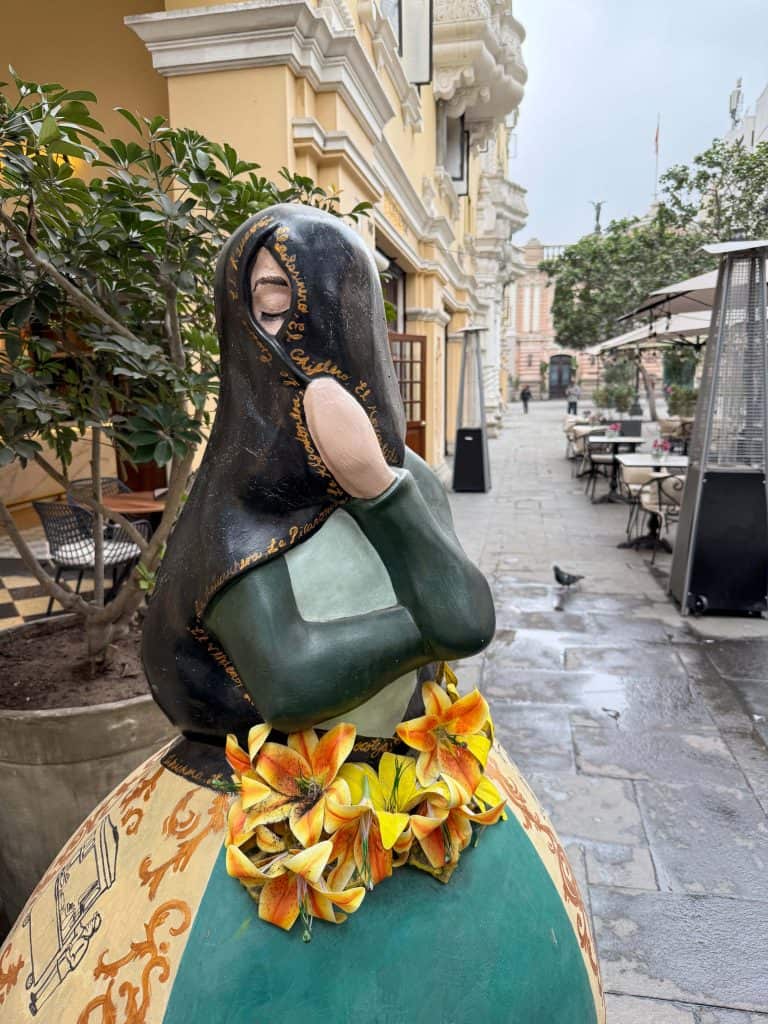
As with any big city knowing where to go, where to stay, and the top places to eat makes all the difference.
In this Lima travel guide, I’ll share what to do, how to get around, and top tips for visiting broken down into 3 main neighborhoods to make it easier (plus a map at the bottom).
I thoroughly enjoyed touring this “City of Kings” more than I thought I would and finding out what to do in Lima was a joy.
⏳ Short on time? My top Lima planning picks:
🛌 Find The Best Lima Accommodations
👣 Top Lima Walking Tour
🍽️ Tastiest Lima Food Tour
🚐 Coolest Day Trip From Lima
Best Things To Do In Lima
Historic Center Of Lima
1. Take A Walking Tour
Trying to figure out what is there to do in Lima? My first recommendation is to take a walking tour of the Lima historic district.
A walking tour will provide all the history and interesting stories of how Lima got its start as a city, why it is the capitol of Peru, and the inspiration behind the architecture.
Plus, it is a great way to see the top highlights of the historic district especially if you are limited on time.
As with any big city, it can be overwhelming to see all the main attractions.
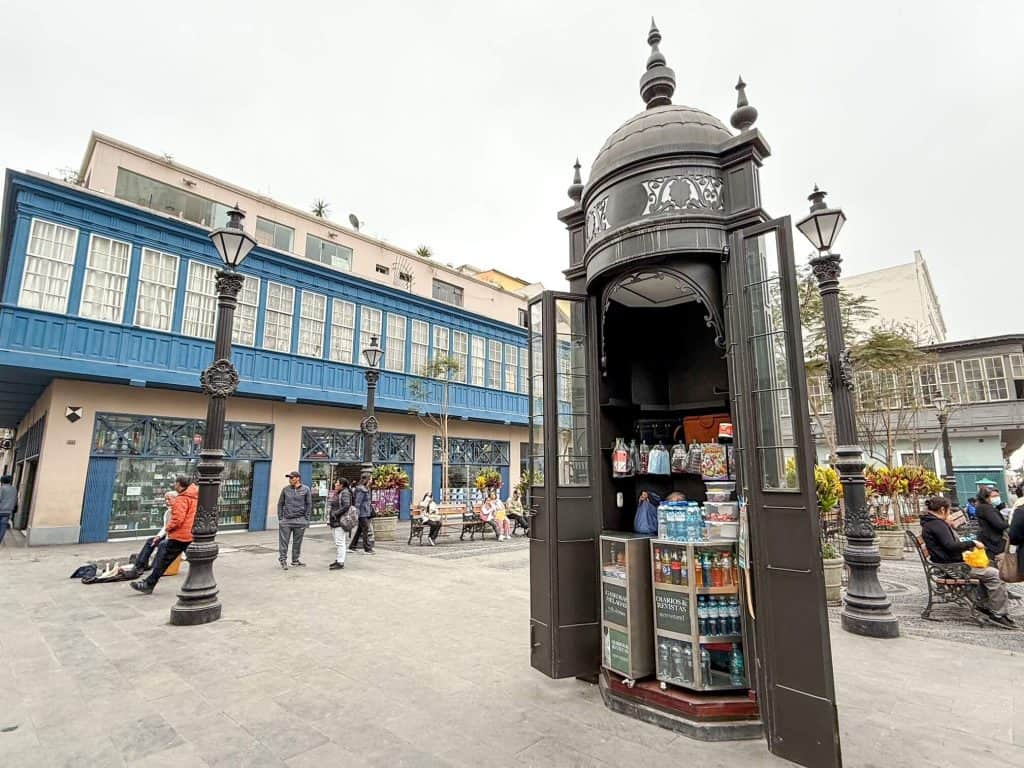
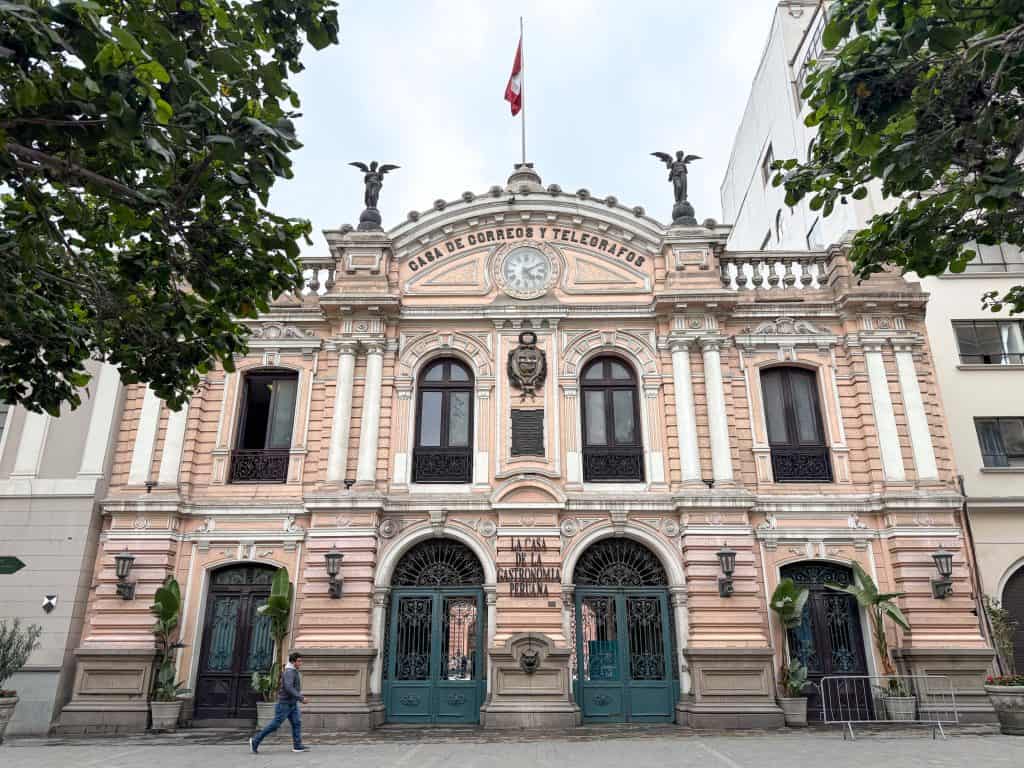
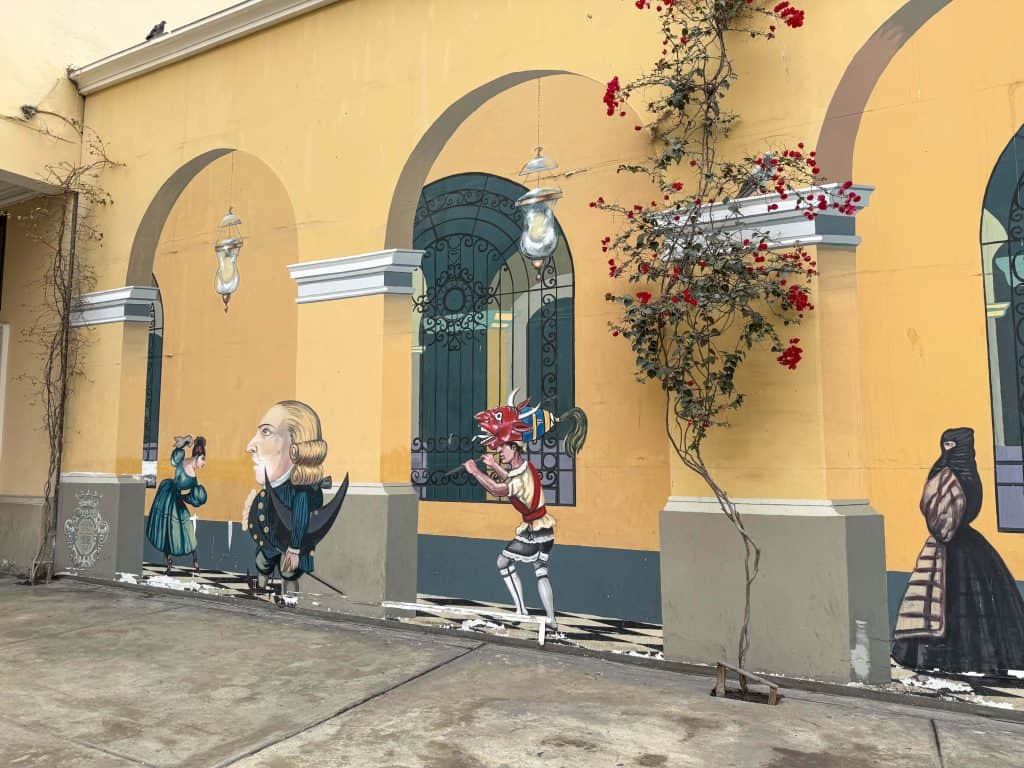
Seeing Lima’s historic district through the eyes of a local connects you more to the culture rather than going it alone.
I always like to take a walking tour on my first day so I can ask my guide where are all the best places are to eat.
It makes it handy as I’ll have a list of restaurants and vendors to sample as I explore.
Take This Historic District Walking Tour!
Book A Historic District Tasty Food Tour!
2. Explore Plaza Mayor de Lima
Plaza Mayor also referred to as Plaza de Armas, is at the heart of Lima’s Historic District.
As with many cities in Latin America, the main square is the hub of activity for events, holidays, and festivals with some of the cities most important buildings surrounding it.
The square was established by the Spanish in 1535 and served as the focal point for the cities expansion.
The beautiful water fountain in the center of Plaza de Armas is the oldest structure in Plaza de Armas from that period.
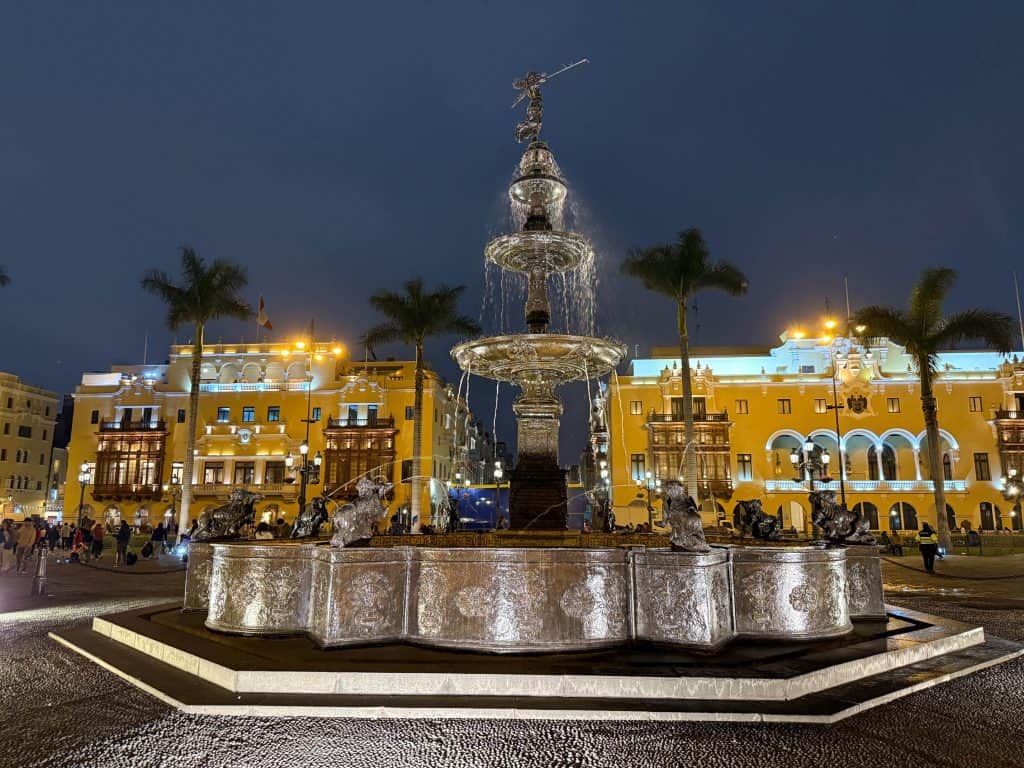
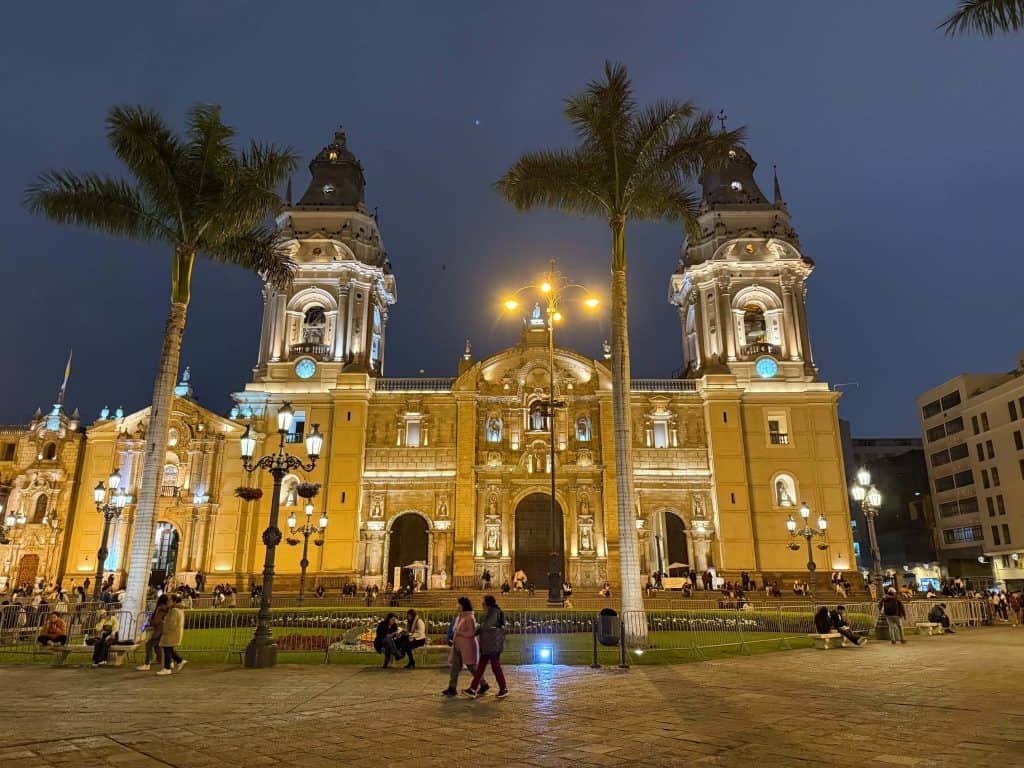
When I first walked through the square, I didn’t even notice the beauty and incredible details of the 3-tiered bronze water fountain that was built in 1578.
It really is stunning to see during the day but even more impressive once evening comes when it is all lit up.
At the top of the fountain is the Greek god, Pheme who is holding a ball in one arm and the shield of Lima in the other.
Need a break from sightseeing? Sitting on one of the benches is a great excuse to people watch and take in the outstanding architecture of the surrounding buildings.
Fun Fact: On a few occasions (holidays), the fountain has been filled with Pisco and welcome to all who wanted to sip the national spirit!
3. Lima Cathedral
The Lima Cathedral (La Catedral de Lima) was the first church in Lima, built in 1535.
It has seen a series of renovations and rebuilding due to earthquake damages since then so there is a blend of architectural styles from Baroque to Renaissance, Gothic, and Neoclassical.
The cathedral is massive and a focal point along Plaza de Armas with its Renaissance and Neoclassical façade.
Upon entering the church you can explore the 3 main naves, several chapels (with elaborate altars), and a museum with some impressive artwork.
You don’t need to pay for a guide but it is helpful if you enjoy learning more about the history.

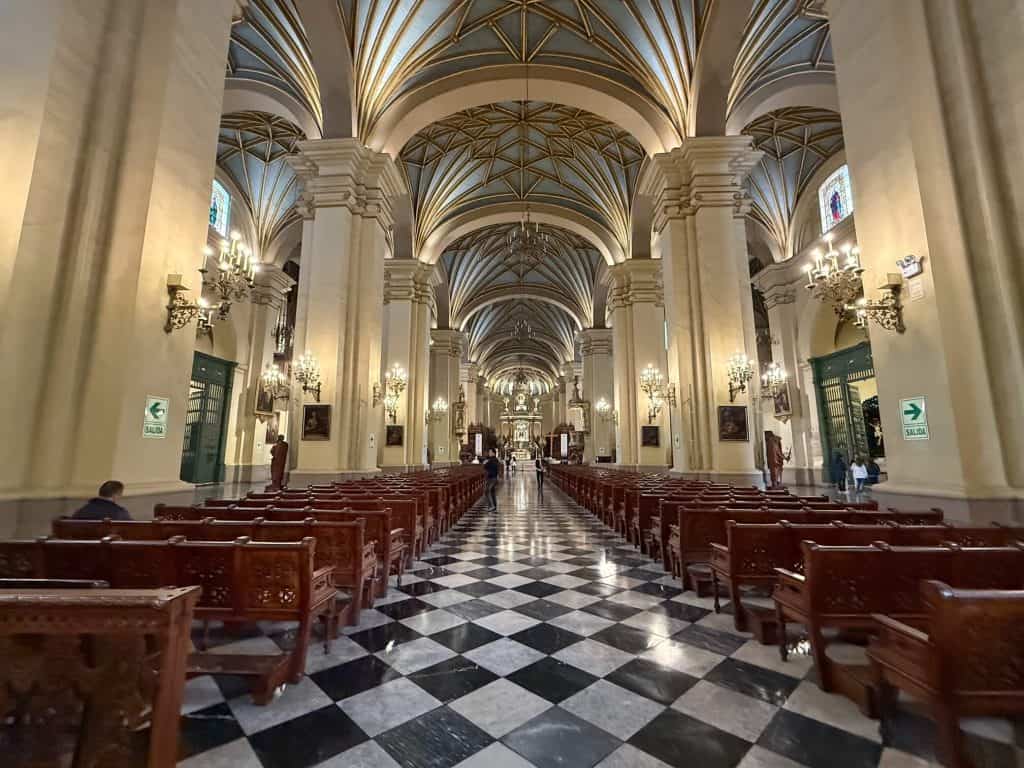

The Spanish conquistador, Francisco Pizarro is the one who initiated the groundbreaking of the cathedral.
A point of interest today is that Pizarro’s remains happen to be buried in the cathedrals crypt which were only discovered in 1977.
Interestingly, when his remains were discovered the head was separate from the body.
On the box the head was discovered in there was an inscription that said, “Here is the head of Lord Marquis Don Francisco Pizzaro, who discovered and won the kingdoms of Peru…”
Tip: Tickets to the cathedral are 30 soles (foreigners). But if you get the combo ticket for the cathedral and the Archbishop’s Palace you can save!
4. Government Palace (Palacio de Gobierno)
Another grand building along Plaza de Armas and diagonal from the cathedral is Palacio de Gobierno.
The Baroque-style palace is home to Peru’s president covering the entire block set behind gates along the Rimac River.
I found it interesting that the current president was the vice president and stepped up when the sitting president was sent to prison. From what I gathered, she isn’t popular among the people.
In fact, seven of the presidents from the past three decades are in prison!
Palacio de Gobierno isn’t regularly open to visitors but you can book a tour a morning tour (Sat & Sun) at least one week in advance via [email protected].
For most, the highlight of visiting the exterior of the palace is to watch the changing of the guards each day at noon.
From start to finish, the changing of the guard takes about 30 minutes. Get there early so you have a great view.
5. Sip A Pisco Sour At 3 Iconic Spots
If you weren’t aware of it yet, a Pisco Sour is the national cocktail of Peru and it’s said that the best ones are right here in Lima, specifically in the historic district.
I admit, I had heard of a Pisco Sour but had never tried one before let alone wasn’t 100% sure what it was.
Shortly after arriving, I had one of my first of many Pisco Sours in Peru and I quickly became a fan!
Generally speaking, a Pisco Sour is made up of Pisco (Peruvian brandy), lime juice, simple syrup, egg white, and topped with a small amount of bitters.
All the ingredients are tossed into a shaker with ice, shaken by hand (a must), and poured into a chilled glass. The shaken egg whites give a creamy foam on top.
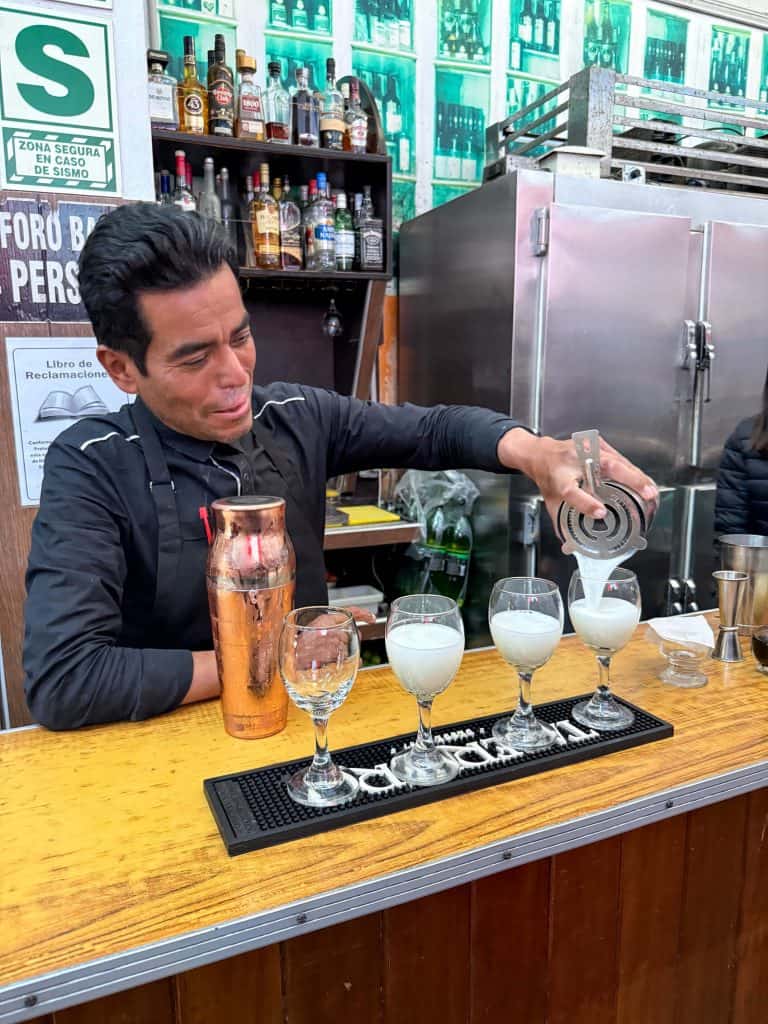
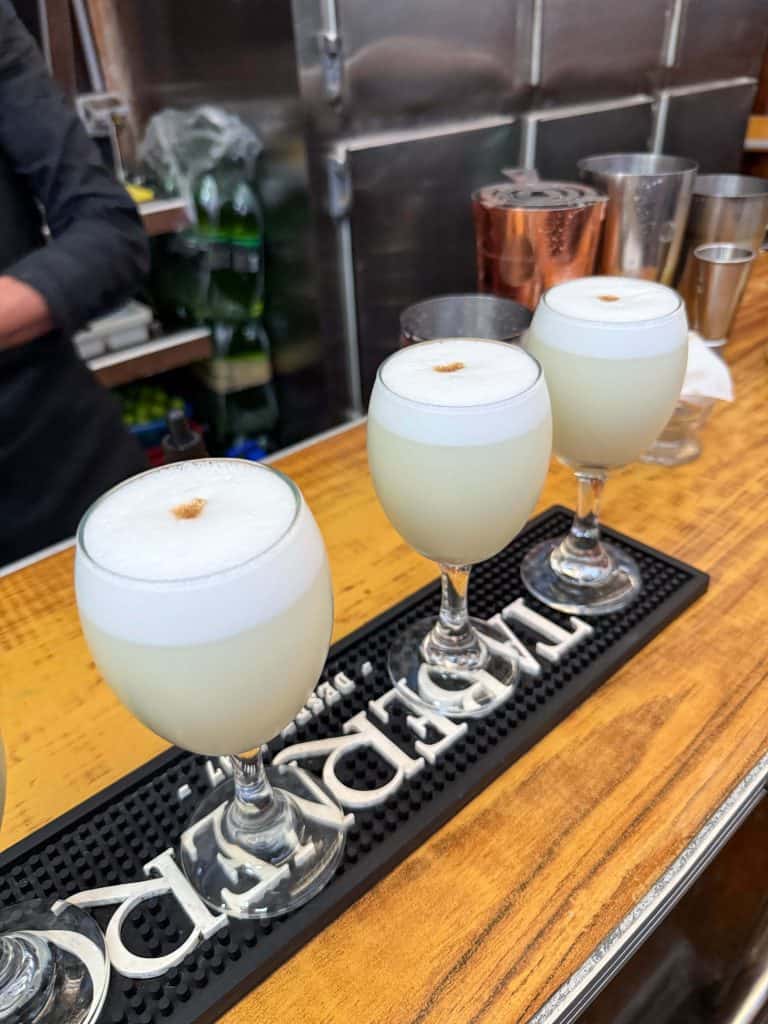
Invented over 100 years ago in Peru, this classic cocktail has become a cherished drink of the nation.
A slightly sweeter version of the Pisco Sour (and another favorite of mine) is made with passion fruit juice known as Maracuya Sour.
I didn’t notice this version so much in Lima but popular on bar menus throughout Peru such as in Cusco and Aguas Calientes.

Three bars in Lima’s historic district are:
Bar Cordano: Excellent Pisco Sours at this famous and historic bar a short distance from the main square.
Museo del Pisco: A bar where you can get awesome Pisco Sours plus the option to book a Pisco tasting to learn all about its history. Book a tasting via Contact on their website.
Gran Hotel Bolivar: You’ll find a delicious Pisco Sour at the hotel bar along Plaza San Martin.
Tip: Are you heading to Barranco? If so, the best Pisco Sour is at Juantio Barranco, a family owned hidden bar.
6. Archbishops Palace
Next door to the Lima Cathedral is the Archbishop’s Palace, which is easily recognizable for its ornate wooden box balconies on the exterior.
If you do a 360-degree scan around the square, you’ll notice most of the buildings have the enclosed wooden balconies known as “miradores” stemming from the Spanish word mirador meaning “to look”.
The Moorish-style architecture of the balconies really captured my attention as it isn’t something you see outside of Southern Spain, Northern Africa, and Middle East.
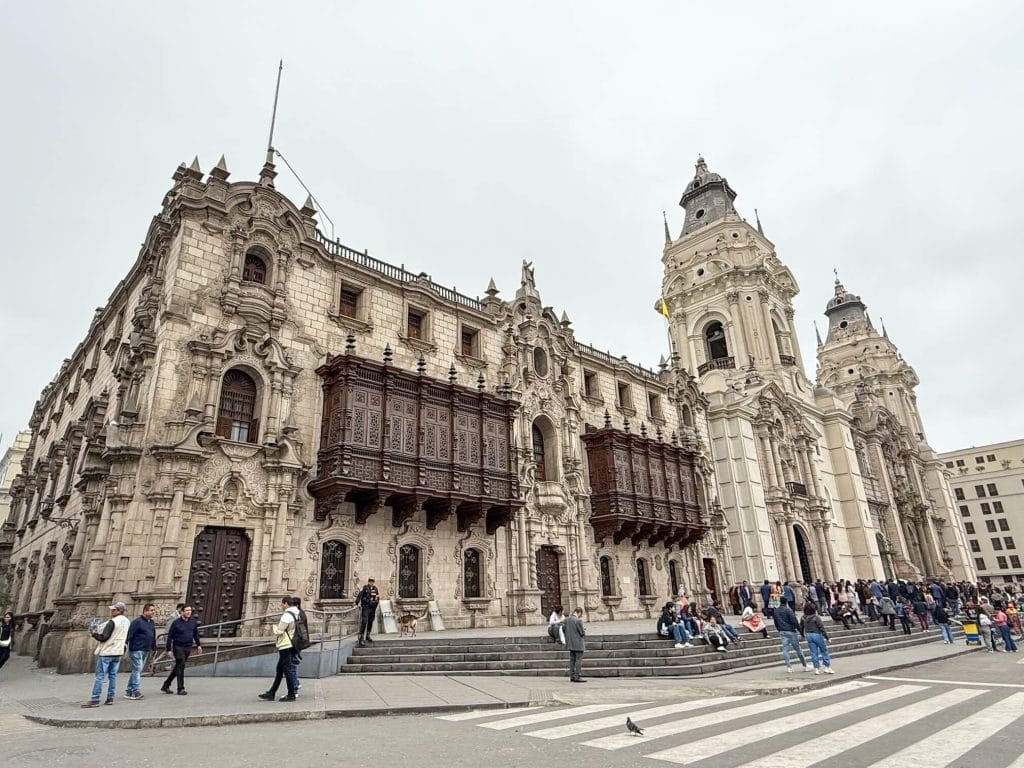
The Archbishop’s Palace was built in 1924 and is the home and office to the Archbishop of Lima.
Since 2009 the palace has welcomed visitors to tour the inside with three floors to explore.
7. Convento San Francisco (& catacombs!)
Just two blocks from Plaza de Armas is Convento San Francisco (San Francisco Convent and Church) and a must see in Lima.
The original church and convent was destroyed in an earthquake so the version you see today was completed in 1672 with its Baroque-style façade.
If you are short on time in the historic district of Lima, make a point to take this awesome tour of the convent (can ONLY visit with a guide).
Plus, it gives you access to see the catacombs underneath!


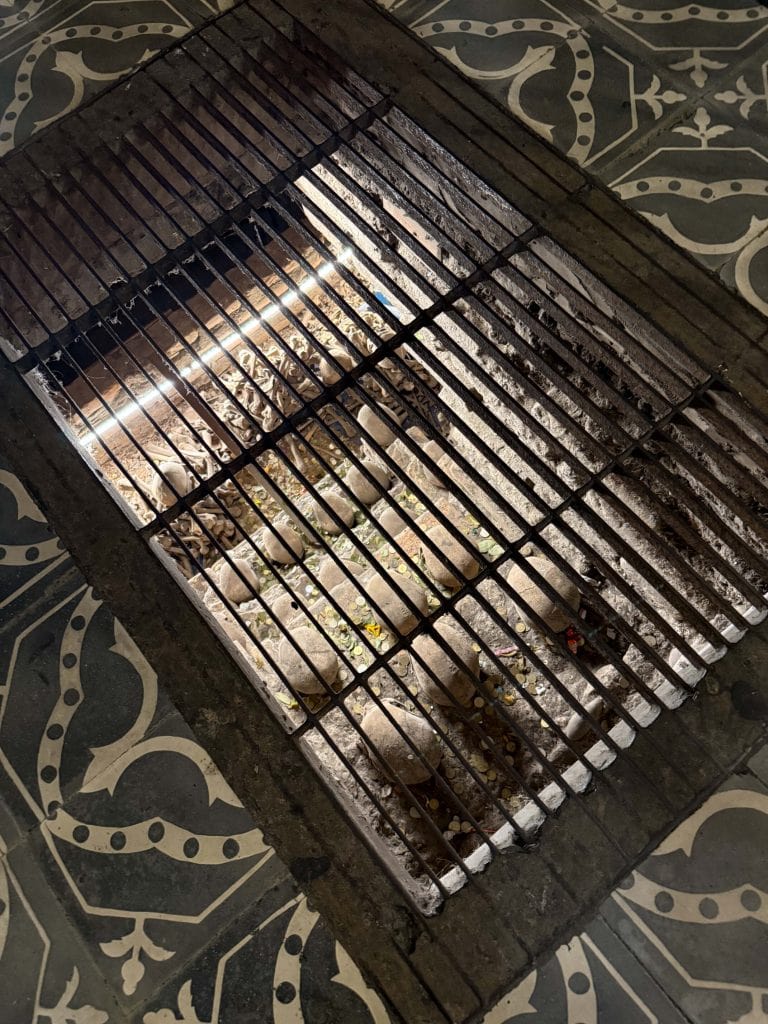
The guide was so informative and really explained the architecture and history of the church and convent so well.
For those that have visited the catacombs in Paris, the Lima catacombs are much smaller not on that kind of scale.
But are they worth visiting? Yes, it really is incredible (in a dark way) to see the skeletons from around 25,000 bodies.
Unlike other catacombs I’ve seen, the skeletons at the top of the pile are arranged by the type of bone and in one are arranged almost decoratively.
At the time, it was believed that proximity of being buried underneath the church would lead you closer to heaven/god.
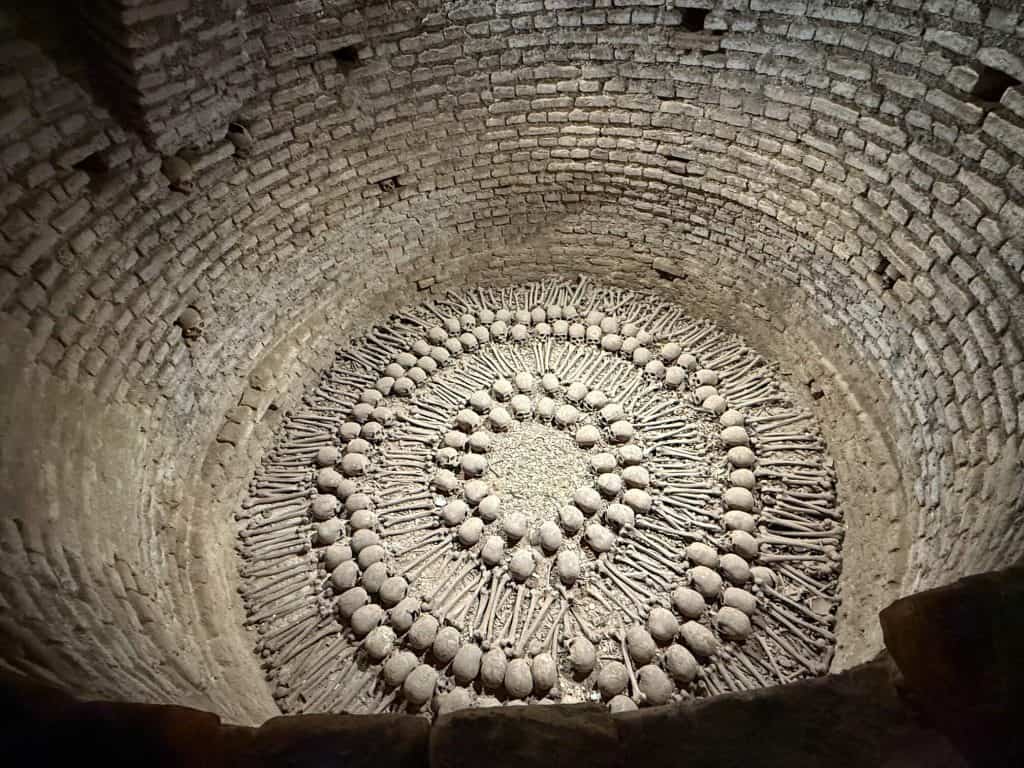
The people buried here were of a wealthier status as you were placed in a group with those of your same profession or associated saint you “made a donation to”.
Unfortunately taking pictures isn’t allowed inside the convent or of the catacombs, so you’ll have to visit yourself to see it all for yourself!
The interior of the convent is quite stunning with its Neoclassical style, grand paintings, and cloister. Oh, and the library looks straight out of a Harry Potter scene which killed me not to get a photo of as it is remarkably beautiful.
Book This Awesome City & Catacomb Tour!
8. Bite Into The Best Chicharron Sandwich
I don’t know about you, but one of the top priorities for me when I get to a new city is finding the best places to eat.
You’ll find everything from street food to upscale restaurants to choose from and one stop that is a must is biting into a chicharron sandwich at El Chinito!
Sangucheria El Chinito right on the corner of Plaza de Armas across from the Lima Cathedral is the best place in town for sandwiches.
You’ll likely notice it for the long line of very hungry people wishfully eyeing the next available table (prepare to wait).
El Chinito translated to “The Chinaman” opened its doors in 1960 when Felix Yong the son of Chinese immigrants decided to offer a mouthwatering chicharron sandwich that all would love.
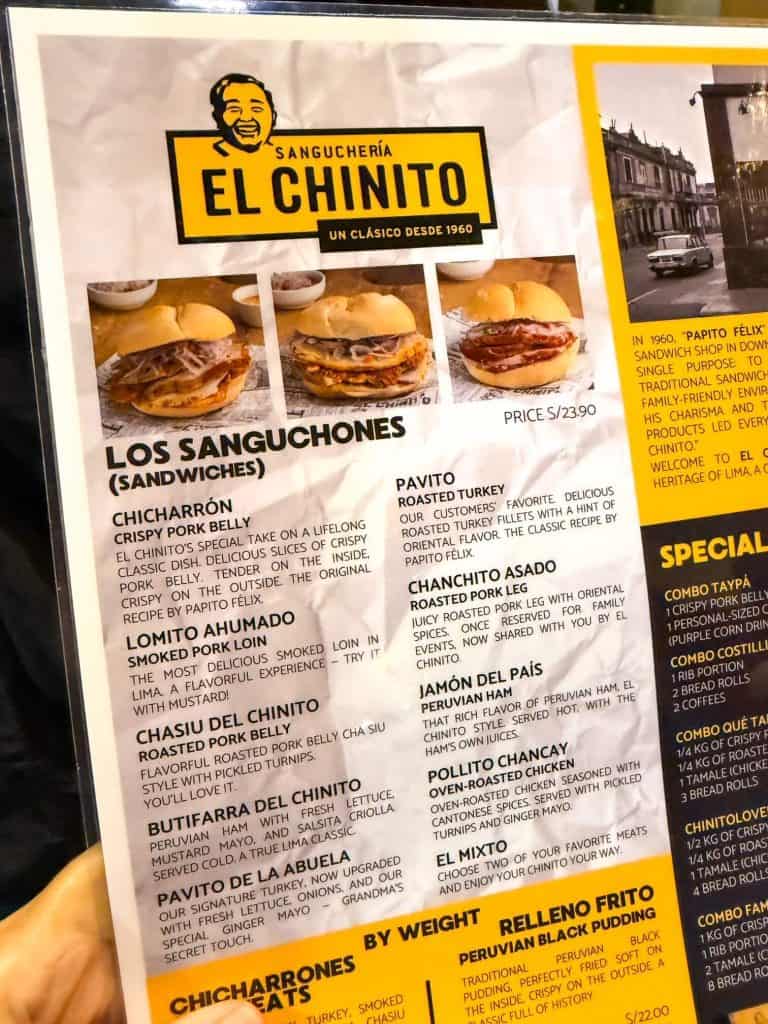
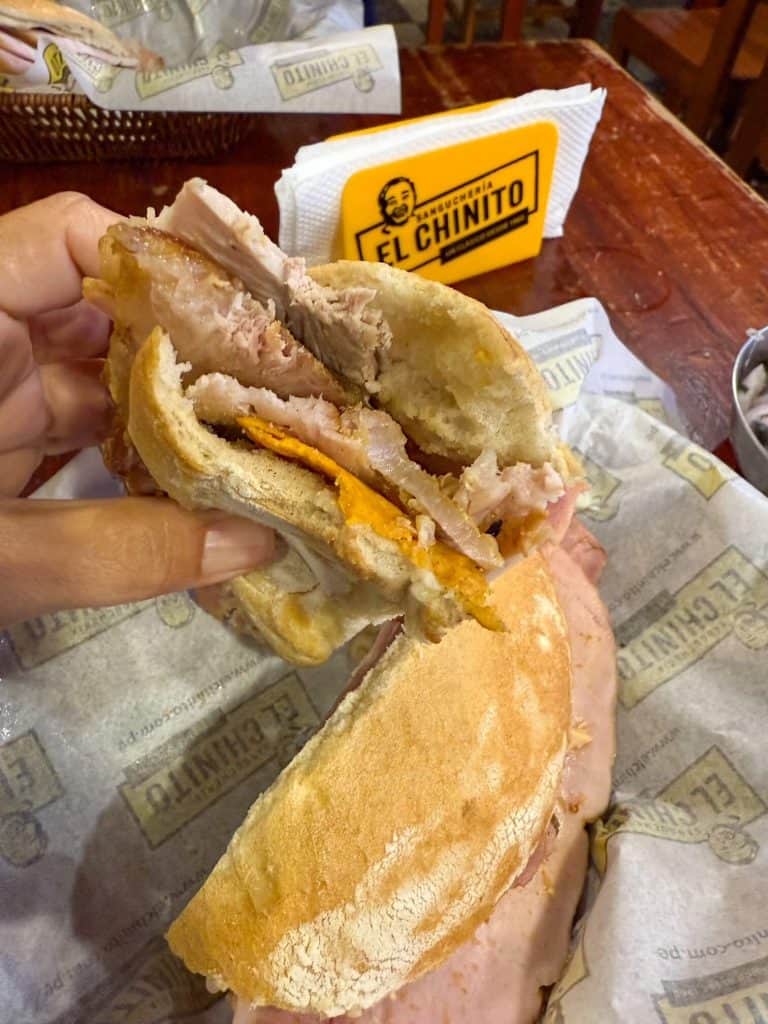
He succeeded when he combined what he knew best, flavors of traditional Peruvian food with a Chinese influence.
Get the Chicharron Sandwich which is the signature item on the menu with lightly fried pork (chicharron) – think wok-style, in a soft baguette topped with a slice of sweet potato, and pickled onions.
Your taste buds will thank you… Another great option is the Lomito Ahumado which is a smoked pork sandwich. I enjoyed both but by far preferred the Chicharron.
It is a casual spot but don’t let that deter you as it literally may be the most delicious sandwich in all of Lima.
And if you are feeling parched, don’t miss out on pairing it with a Chicha morada, a local Peruvian drink made from fermented purple corn (non-alcoholic).

There are few locations in Lima but the original is here in the historic district.
Tip: Most of the year Lima can have cooler temps so bring a jacket to stay warm as you eat in this open air venue.
9. Basilica & Convent of Santo Domingo
One block northwest of Plaza Mayor (Plaza de Armas) is Basilica & Convent of Santo Domingo, one of the most historic sites in Lima.
Originally built in the 16th century and later reconstructed in the late 17th century after earthquake damage, it is hard to miss this church for its very tall bell tower that looms large over the church and convent.
The church is painted in a creamy white with blue and gold accents in the tiles and borders all the way up to the top of the tower.
Three of Peru’s most famous saints (San Juan Macias, Santa Rosa de Lima, and San Martin de Porres ) are buried here resulting in it’s important religious significance.
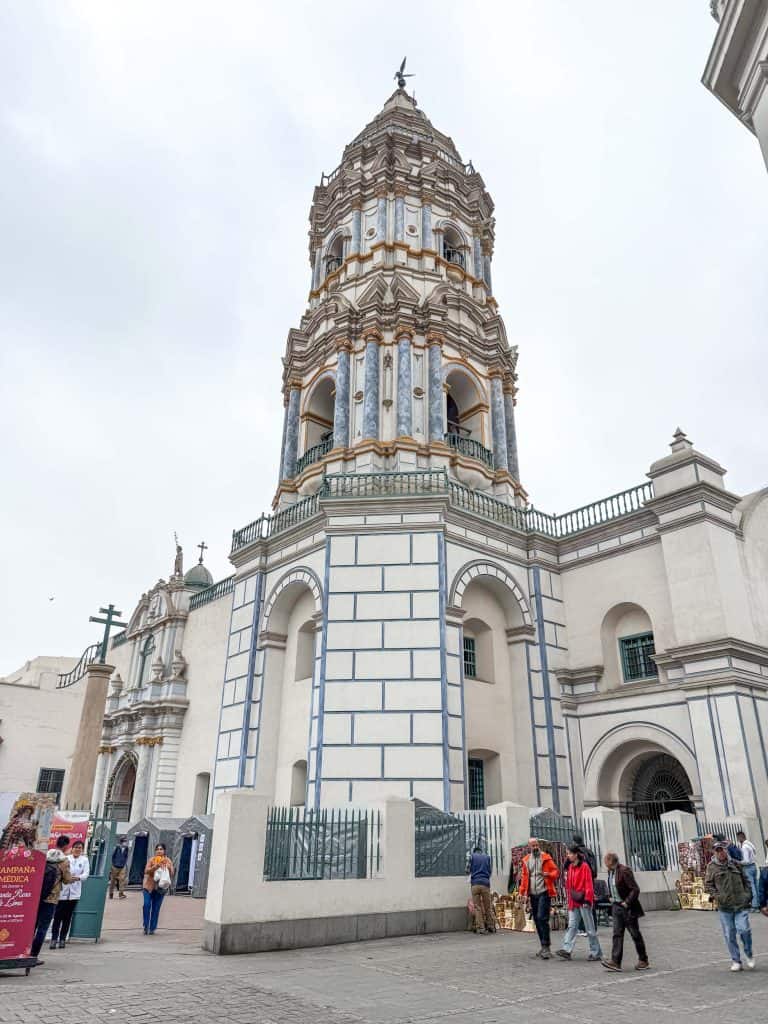
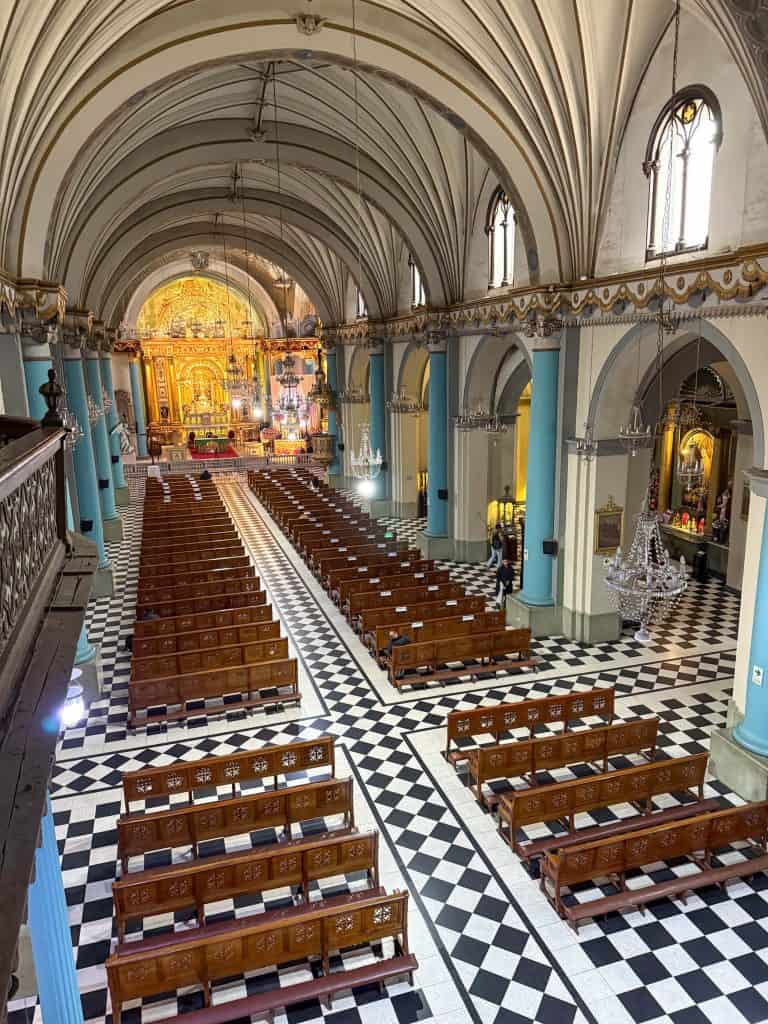

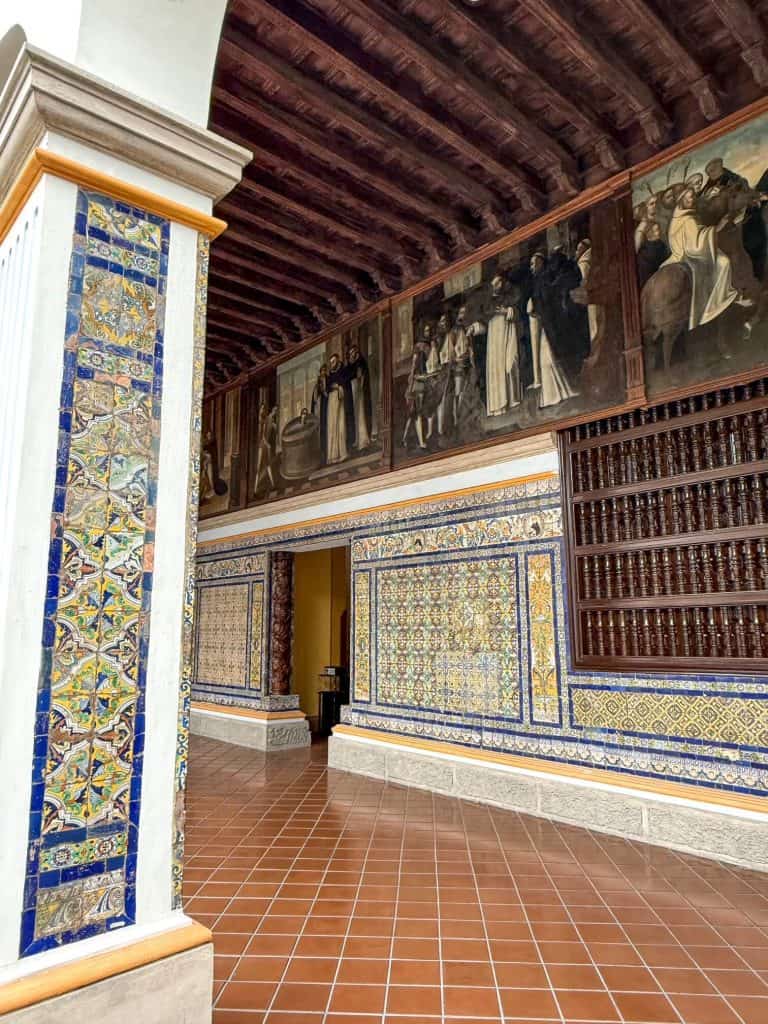
The church is free to enter and quite a site with its predominantly turquoise-blue interior paired with shades of white and gold throughout.
I don’t think I’ve ever seen a church interior so blue but it is beautiful to see.
Next door at the convent there is a fee to enter which I highly recommend as the various rooms have a ton of lovely architecture, artwork, garden, chorus, and access to climb up the bell tower.
You can roam freely through the convent but to go up the bell tower, just go back to the front and let them know you want to go up and they will let you join a tour for that portion.
Once at the top, you’ll be greeted by fantastic panoramic views of the Rimac River and all the buildings in the Lima historic district.
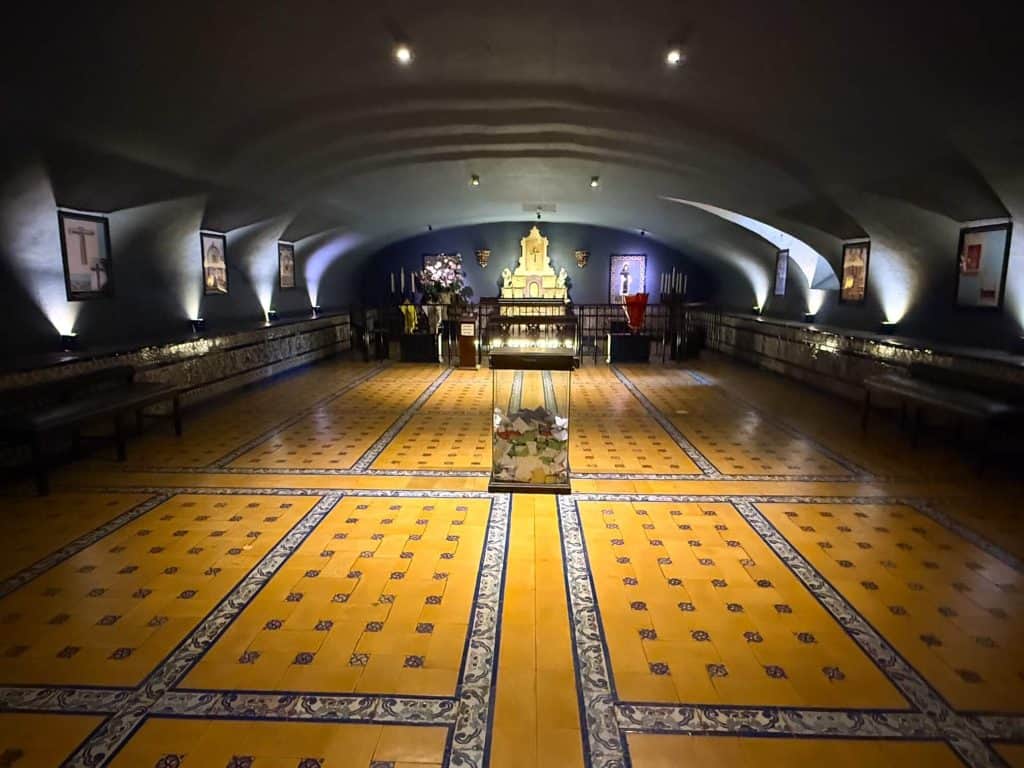
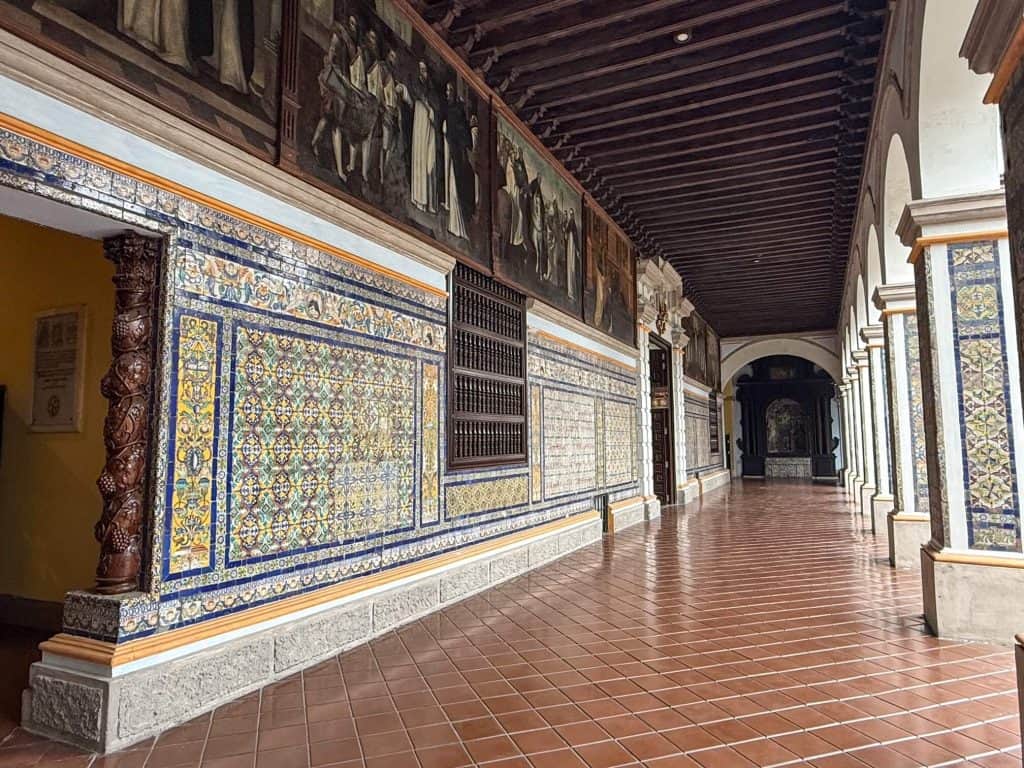
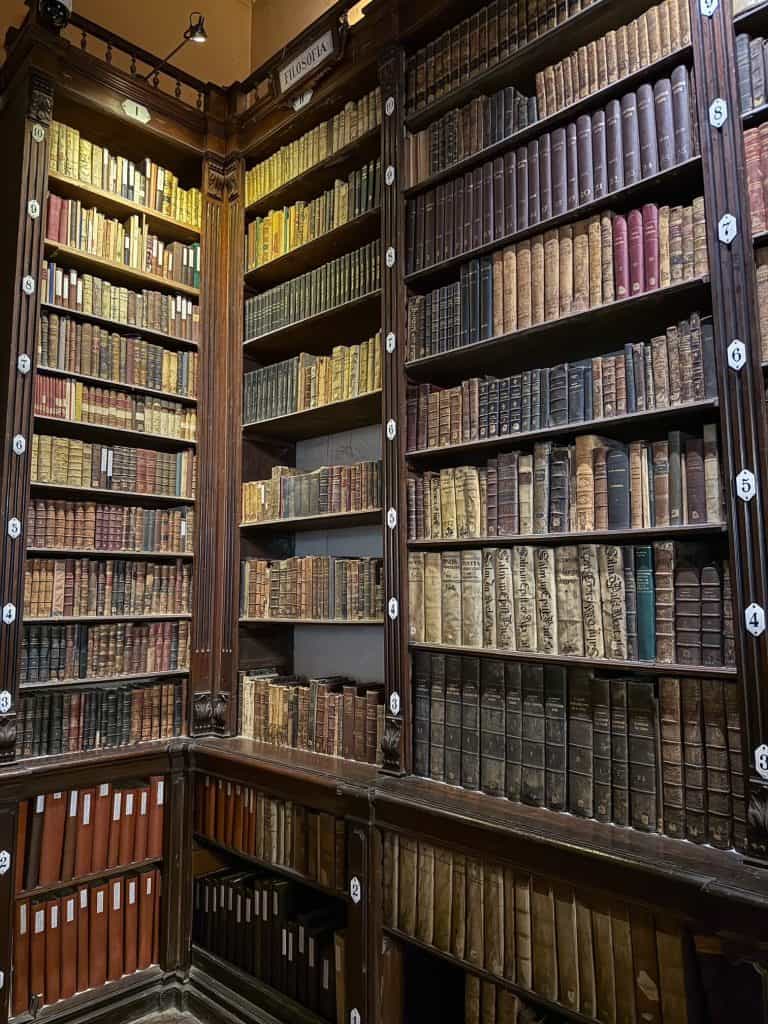
10. Indulge In The Tastiest Churros
Are you a fan of churros or have a sweet tooth? Head straight to Churros San Francisco for what might be the best churros in Lima and the rest of the world…
Churros San Francisco was on my list of places to check out but it wasn’t on my mind until I strolled by and saw a long line which piqued my interest.
I happily stumbled upon it on my way to Convento San Francisco (catacombs) and made the decision that I needed a churro break.
I’ve had my share of churros in the U.S. and Mexico (which I love) but the style here in Lima is different – in a good way!
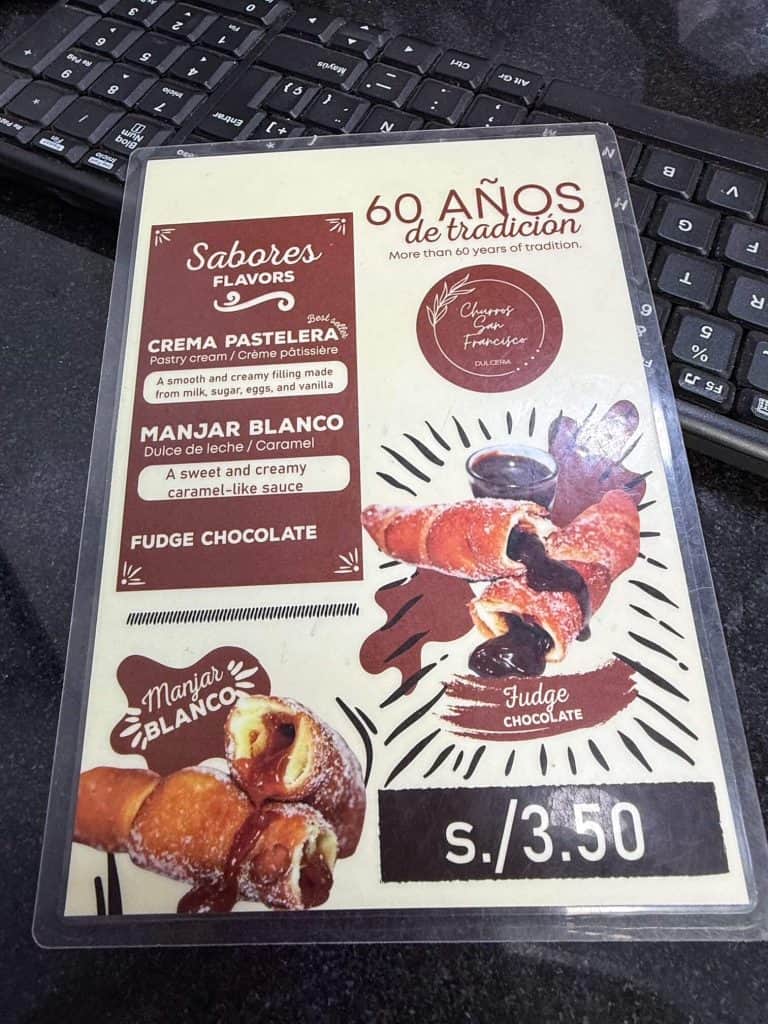
For over 60 years Churros San Francisco has been churning out piping hot, melt in your mouth churros.
It’s said that this Peruvian version was created by a Spaniard who took the traditional churro and made a variation using local ingredients.
The result? A larger rolled dough tube (with the girth of a burrito) filled with a warm sugary filling, rolled in a dust of sugar, and eaten immediately.
These are meant to be eaten hot and fresh for the best experience…

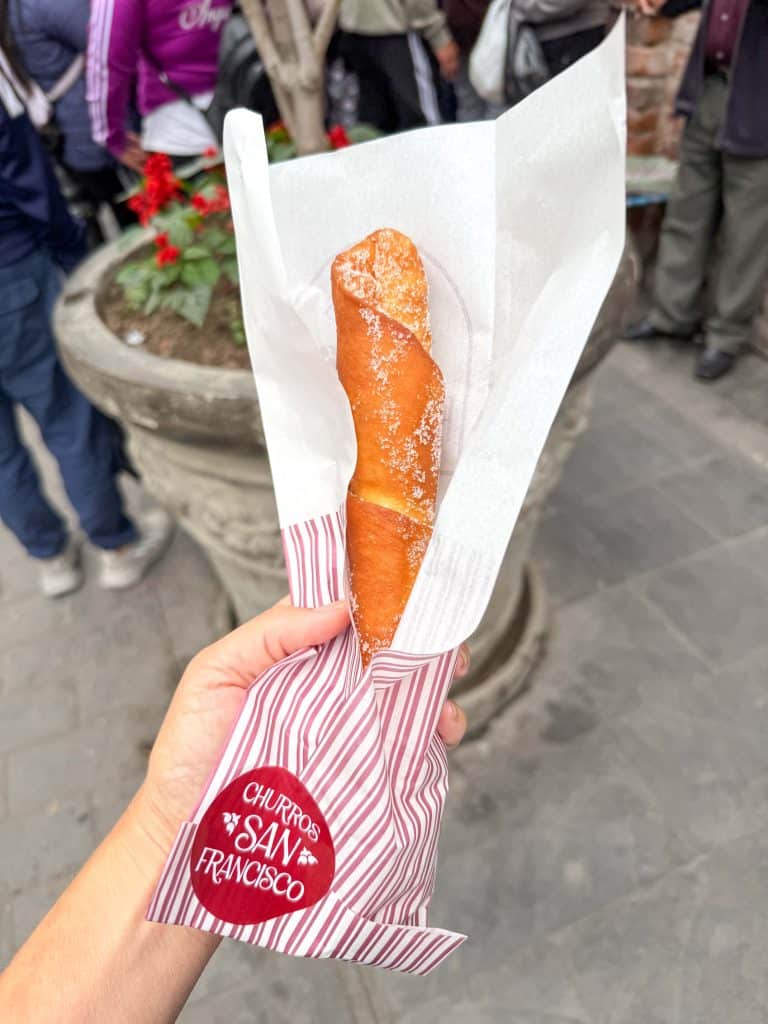
There are 3 filling options, so make sure you know which filling you want before you get to the counter.
- Manjar Blanco (similar to a caramel-like sauce)
- Crema Pastelera (pastry cream – made with milk, sugar, eggs, & vanilla)
- Fudge de Chocolate
The most popular and my personal favorite is the Manjar Blanco filling!
Tip: Your hands will get sticky from the sugar and sweet fillings so have a pack of travel wipes on hand.
Price: 3.50 soles per churro. There is no place to sit, purchase and enjoy on the go.
11. Find Las Tapadas Limenas
As you are exploring the historic district around Plaza Mayor, there are a number of colorful statues called Las Tapadas Limenas or “the veiled women of Lima”.
They aren’t hard to spot as each is painted with a colorful dress with their heads and faces covered by a shawl except for one eye.
This tradition began once Lima was officially founded by the Spanish and associated with dress of colonial women.
There are a few theories of how it started but most agree that it was a way for them to stand out from other races and classes.
These colonial women were to be seen as a “higher class”.
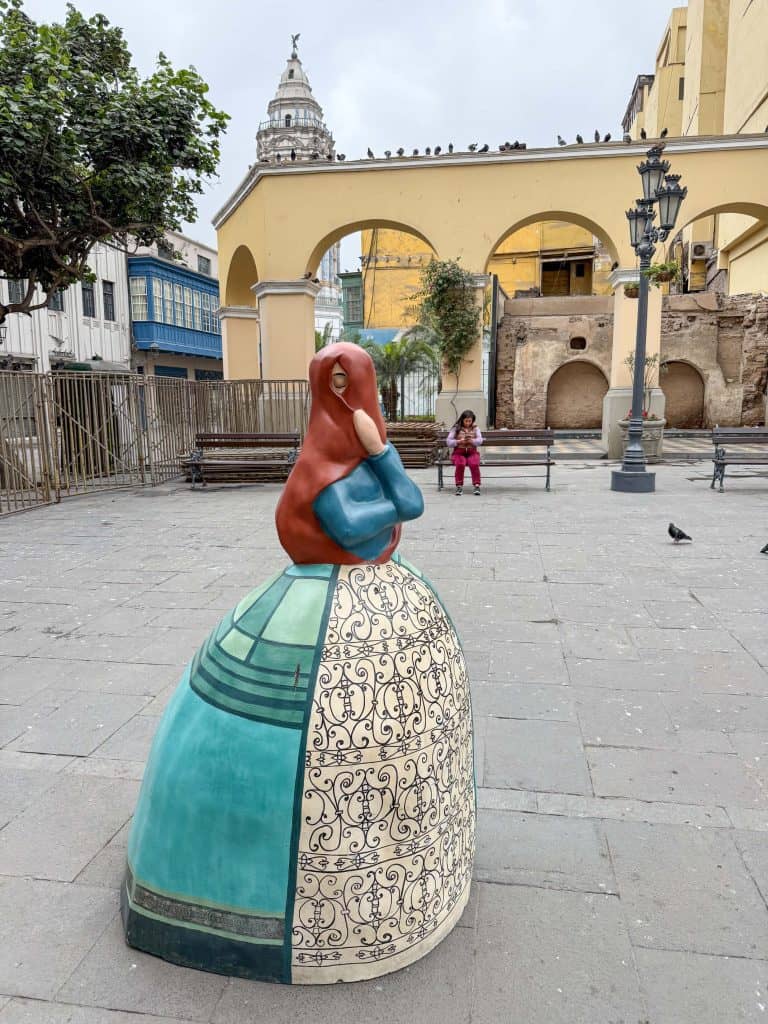
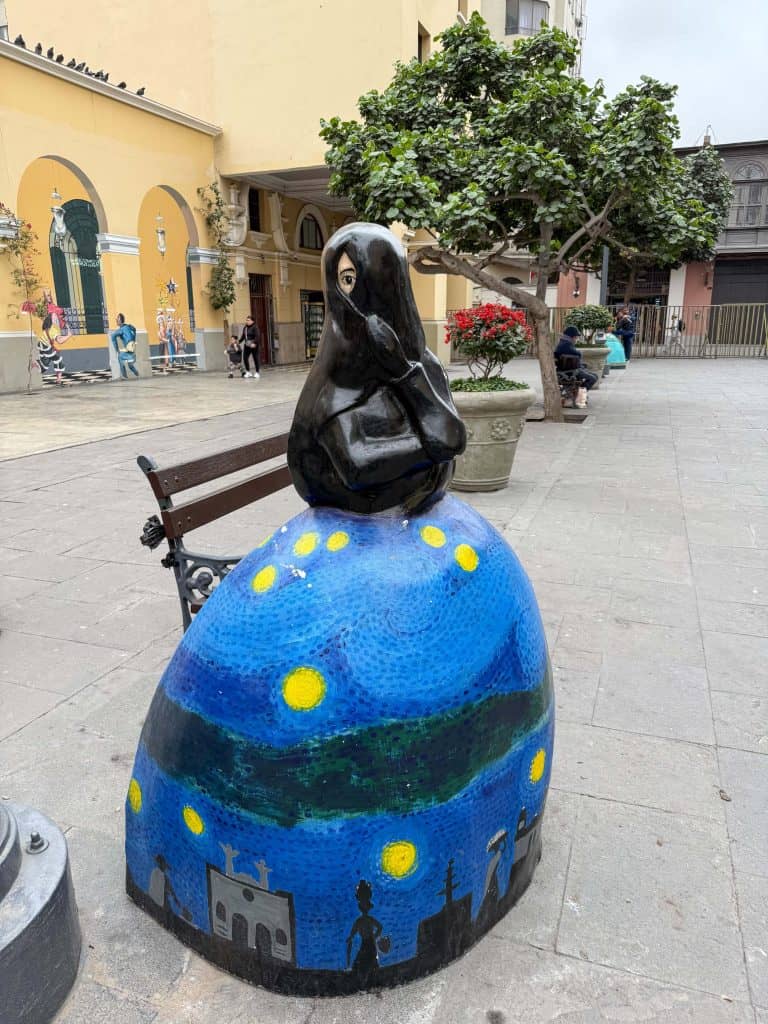
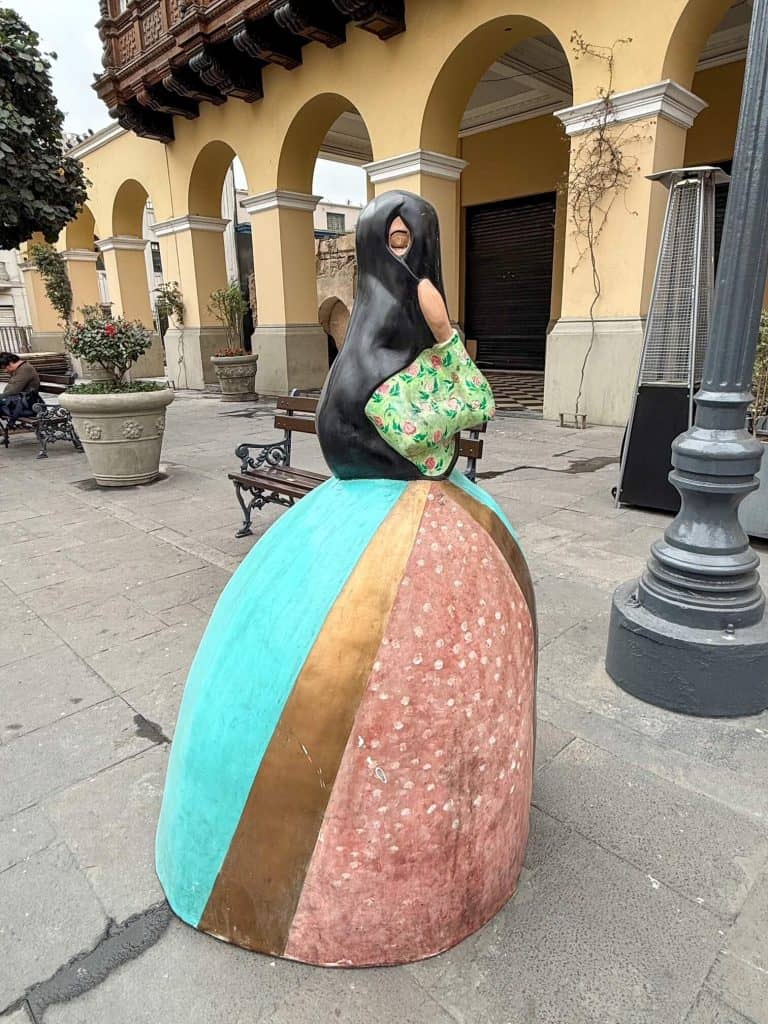
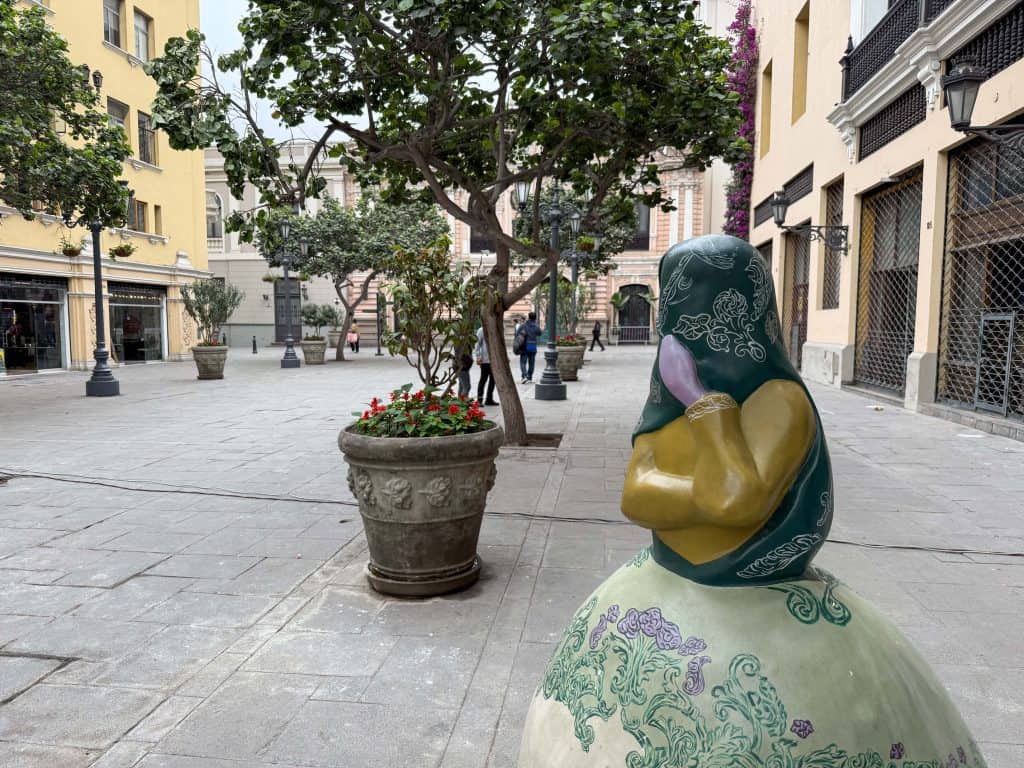
In present day it might seem that this was a form of repression but it seems it was the popular style of fashion for the time.
The women were free to wander amongst men and others without anyone knowing their identity.
And at times it was even considered seductive with only the one eye showing. Maybe even a form of flirting during the era between 1500s and 1900.
Tip: You can find several of the Las Tapadas Limenas, statues around the Francisco Pizzaro Monument on Pje Sta Rosa near the public bathrooms (1 block north of Plaza Mayoe).
12. Stroll Down Jiron de la Union
Explore Jiron de la Union, a pedestrian-only street that links Plaza Mayor to Plaza San Martin.
It was established the same year that Lima was founded by the Spanish in 1535.
The street runs 5 blocks and is a great street for admiring beautiful architecture, a church , and people watching.
Back in the 19th century, Jiron de la Union was the place to be and to be seen among the wealthy aristocrats.
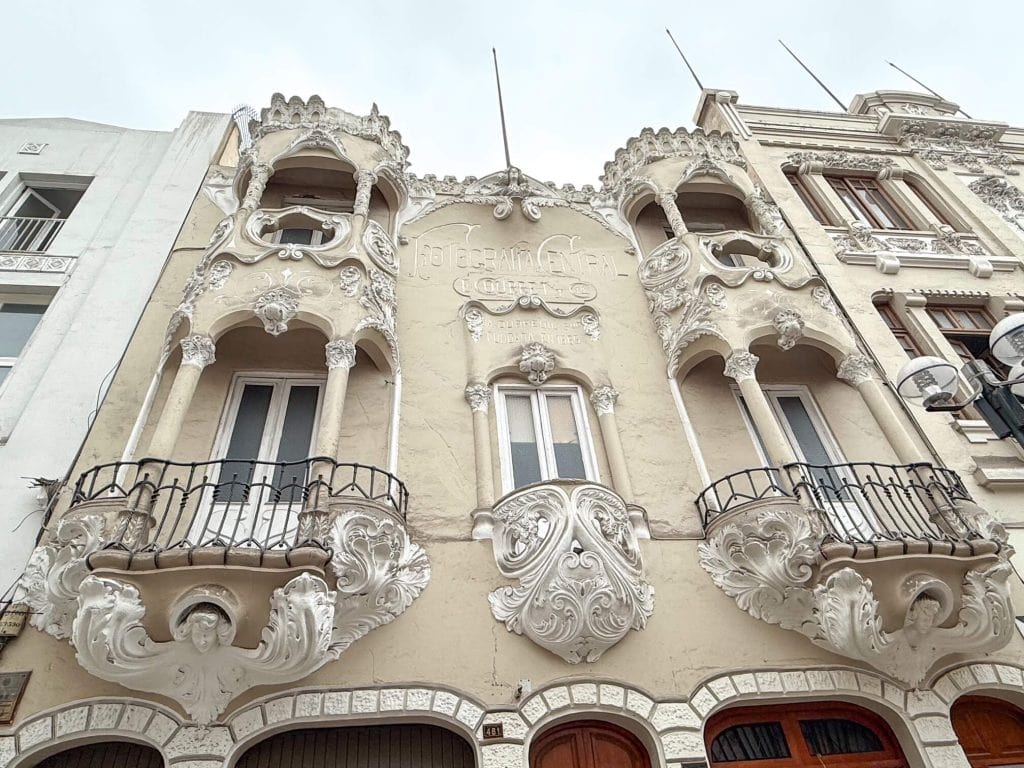
Today, you can view art-deco and colonial style architecture that provides a glimpse into what this street must have been like in its prime.
A few buildings to take notice of are:
- Central Post Office
- Fotografia Central (between Plaza Mayor and La Merced Church)
- Basilica de La Merced (and the building directly across from it)
- Monumento a Ramon Castilla
- Gran Hotel Bolivar
- Colon Theater
- Andres del Castillo Museum of Minerals
Tip: As with any busy area, always keep your belongings in front of you and zipped up in a purse.
13. Larco Museum
The Larco Museum (Museo Larco) is a short taxi ride from the historic district of Lima but close enough to include it in this section.
I say definitely add the Larco Museum to your must do in Lima list!
Officially the Larco Museum is in the Pueblo Libre neighborhood and is a lovely space to visit for its architecture, courtyard garden, with an abundance of plants and flowers.
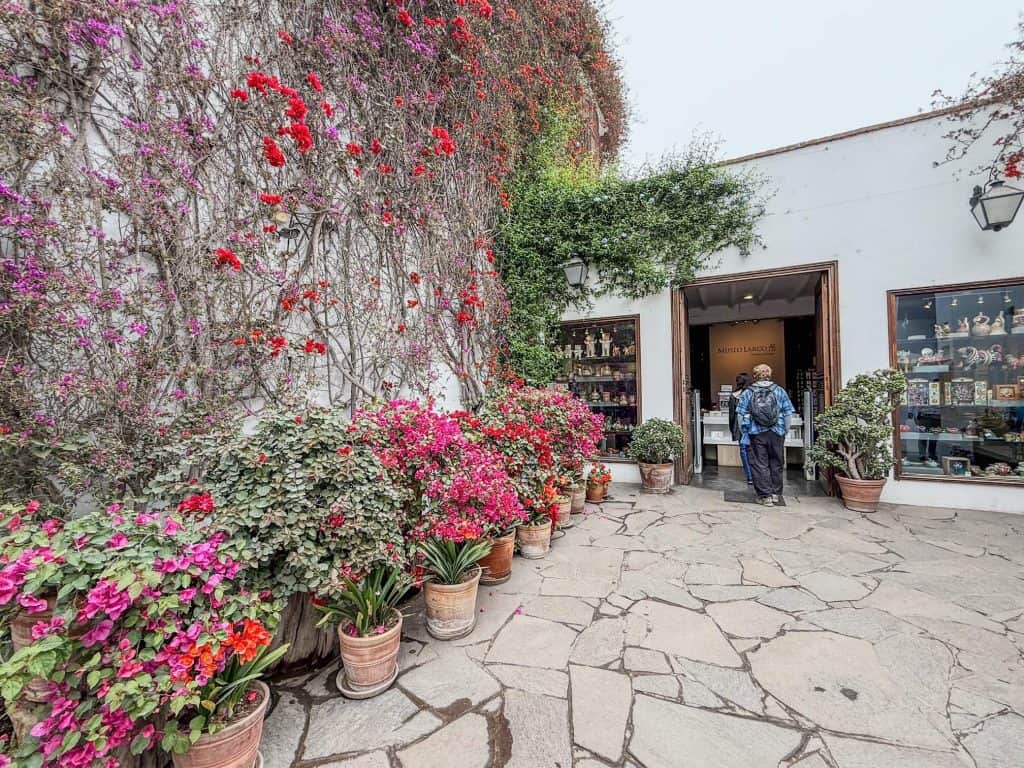
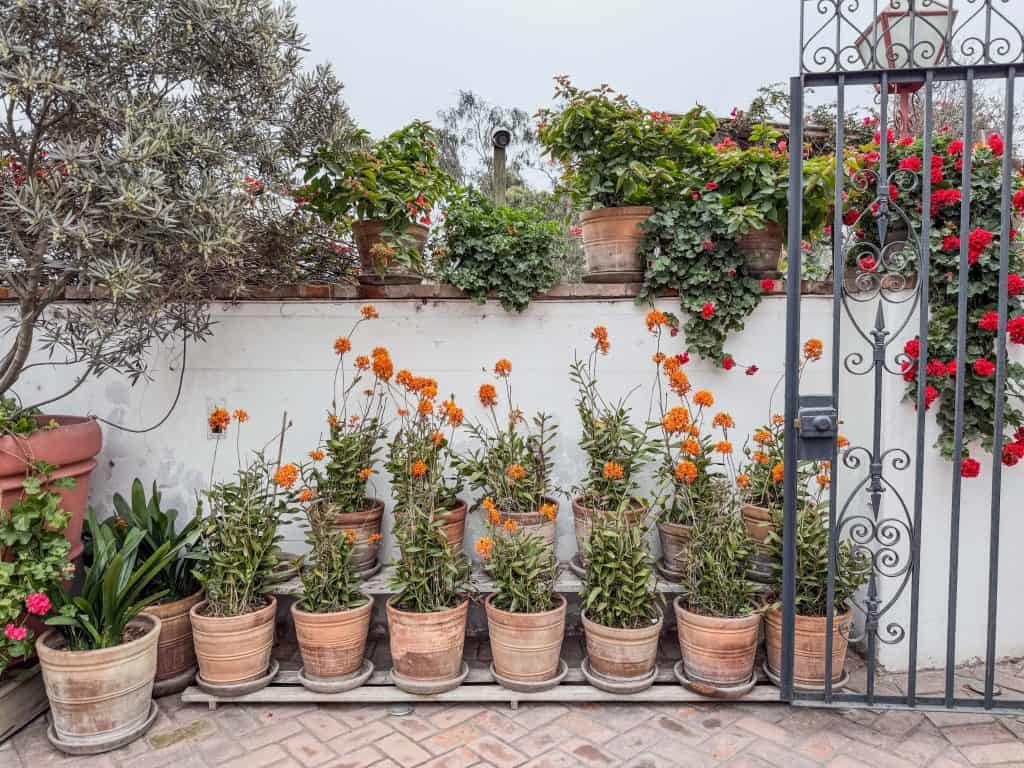
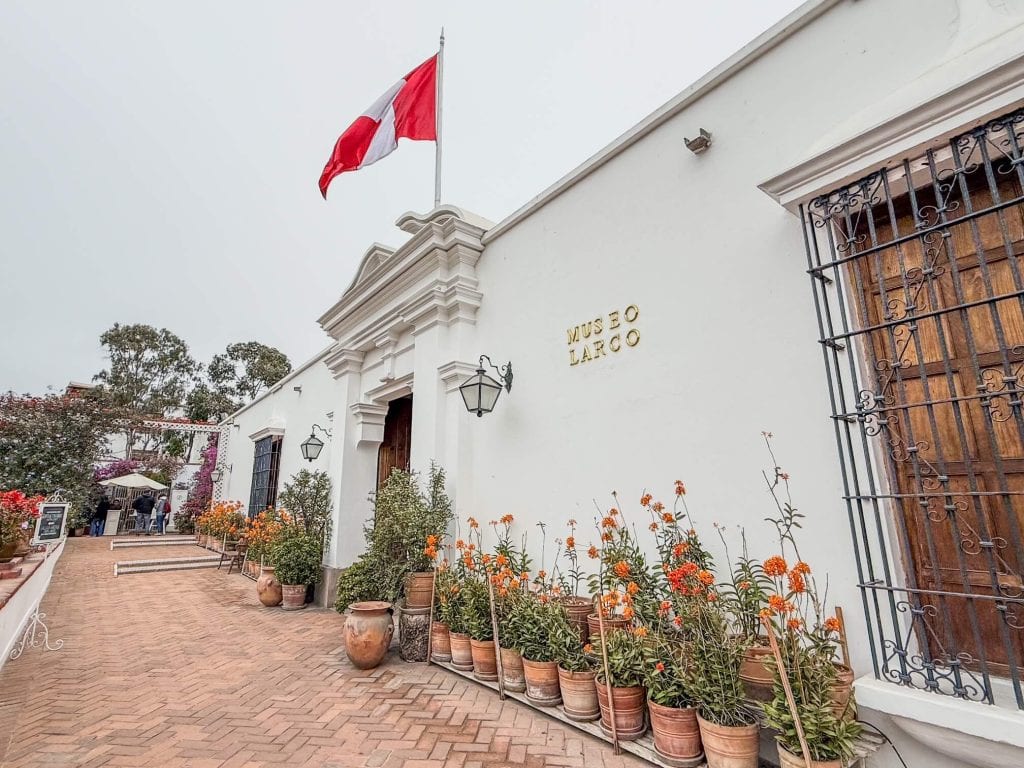

But the main reason to visit is for the incredible array of artifacts, statues, paintings, jewelry, and information from Peru’s pre-Columbian era.
The majority of the items you see here are between 2,000 and 3,000 years old and found in Peru north of Lima. What is remarkable is the condition everything is in.
Everything is so well preserved largely due to the dry climate and protected by the sand until they were discovered.
Housed in a stark white mansion that previously belonged to Rafael Larco Herrera, a wealthy businessman and politician.
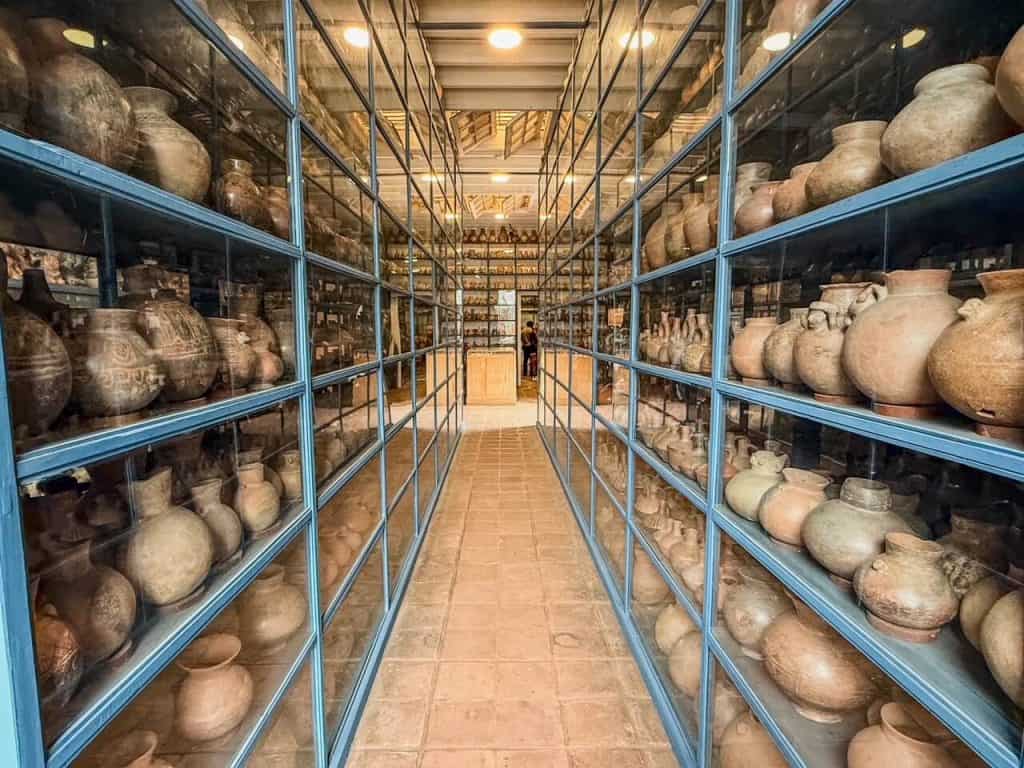
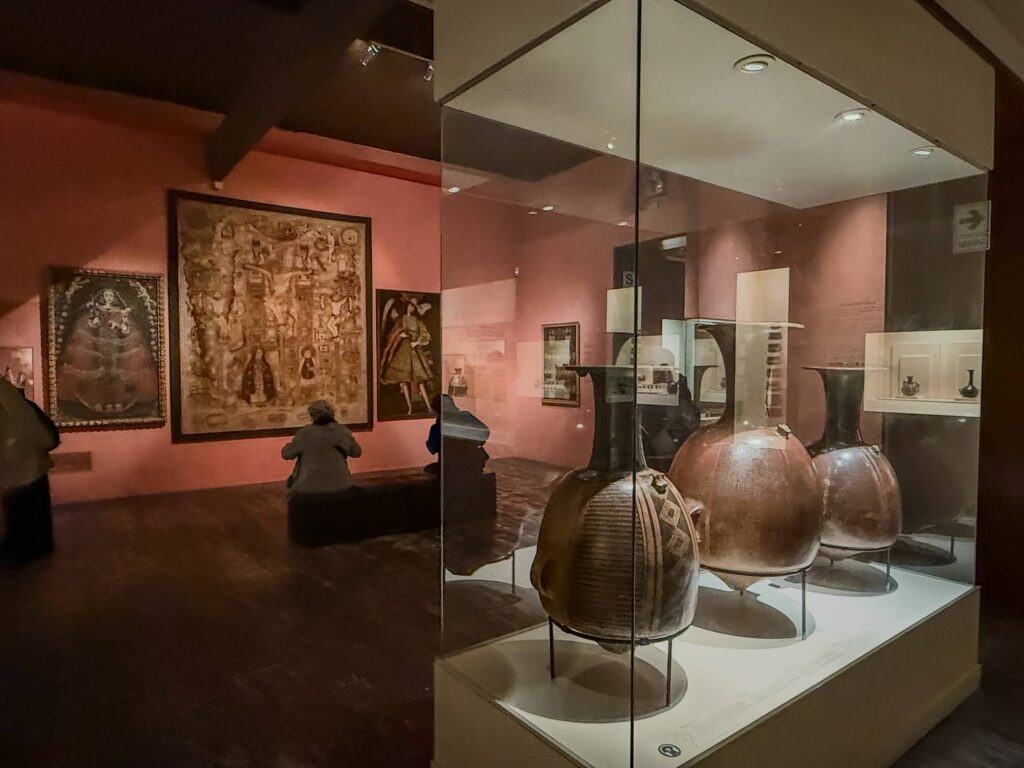
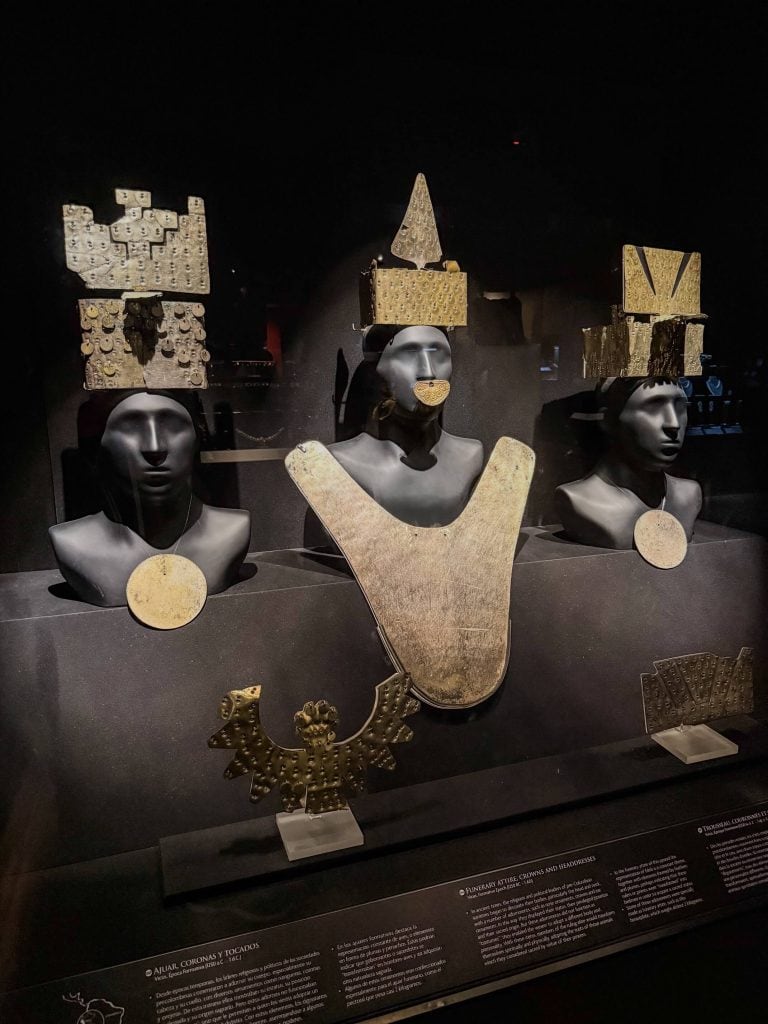
It is thanks to Larco that there is an impressive amount of Peruvian history and culture that has been saved for generations to see.
As far as the layout of the museum and the quality of the artifacts, I thought this was the best museum in Lima.
Tip: There is a restaurant onsite if you want to grab a meal or drinks with a beautiful patio.
Entrance Fee: Adults are 50 soles but if you purchase the tickets online, it is 40 soles. Open daily from 9am to 7pm.
14. Parque de la Muralla
If you are visiting Convento San Francisco & Catacombs (#7 above) walk towards the Rimac River to see Parque de la Muralla.
At this park, you’ll get views of the remaining city wall that once surrounded Lima’s historic district in the 1600s.


Most of the wall was torn down as the city expanded in the 1870s but this small section was discovered by archeologists and kept preserved.
There is a small green space, a restaurant, a petting zoo, benches to sit, and views of colorful houses on the hillside of San Cristobal.
15. Museo de Arte de Lima (MALI)
Not too far from Plaza San Martin on Jiron de la Union is Museo de Arte de Lima known as MALI.
MALI is home to 3,000 years of pre-Columbian history in Peru inside the spectacular architecture of the Palacio de la Exposicion.
The building is in neo-Renaissance style and is reason enough to visit with its grand design.
Here you’ll find an expansive range of paintings, artifacts, sculptures, ceramics, and textiles prior to Spanish colonization. And a mix of contemporary art which ads to the appeal of visiting.
There are rotating exhibitions and courses depending on the time of year. And there is a café onsite if you want to get a snack or coffee.
Entrance Fee: 40 soles for adults.
Hours: Open 10:00 am to 6:00 pm Tuesday, Wednesday, Thursday, Friday & Sunday. Until 5:00 pm on Saturday and closed on Monday.
16. Magic Water Circuit Show
If you are in the historic district after the sun goes down, make a point to see the Magic Water Circuit.
It’s a water light show from the fountain in Parque de la Reserva a short distance from MALI Museum, about a 20 minute walk.
Each night at 7:15pm, 8:15 pm, or 9:10 pm vibrant lights illuminate a water show from a series of 13 fountains paired beautifully with music.
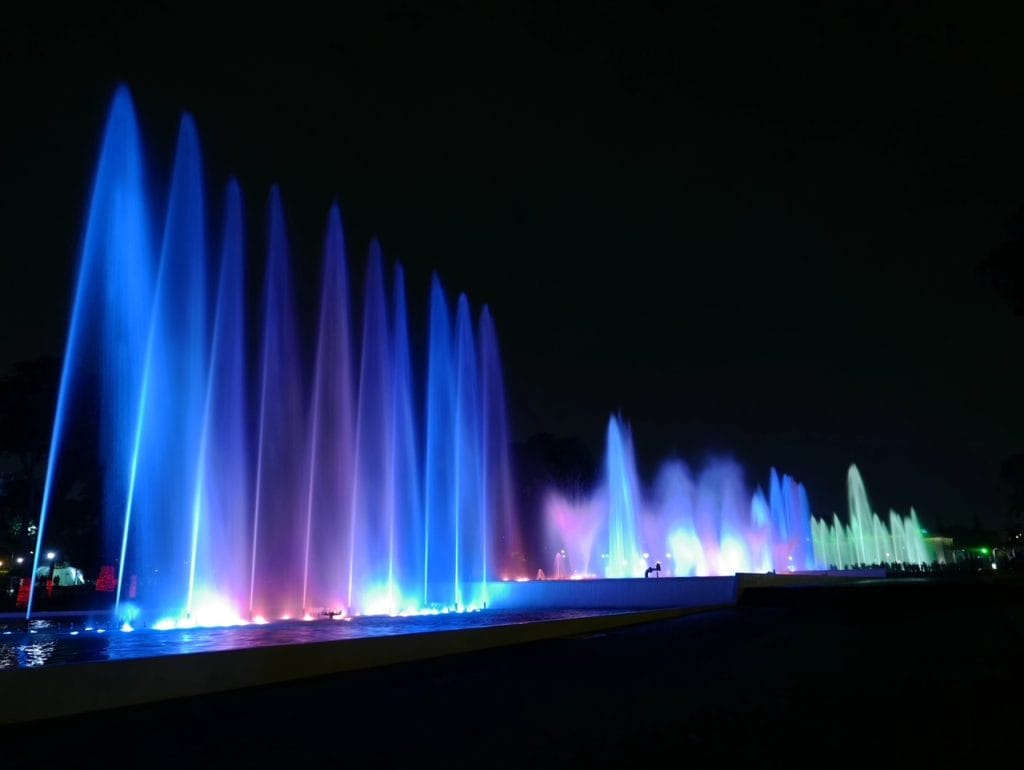
If you have ever seen the water show at the Bellagio in Vegas it is kind of similar.
There is even the Tunnel of Surprises where you can walk under a tunnel formed by arching water.
Entrance Fee: 5 soles for everyone with kids under 5 are free.
Book A Night Water Show & Catacombs Tour!
Miraflores Neighborhood
Miraflores is overall the best neighborhood to stay for hotel selections and tons of incredible restaurants, coffee shops, and bars.
17. Enjoy A Yummy Breakfast
Peru is one of the first countries I’ve been to that doesn’t focus a lot on breakfast or breakfast places.
For locals, many don’t eat until midday or have a bowl of warm quinoa (like oatmeal) to start off the day.
But the younger generation and a push from tourism have triggered a number of cafes that serve coffee and a light menu of breakfast items.
And the menu’s might not be lengthy but the quality of dishes are top-notch!
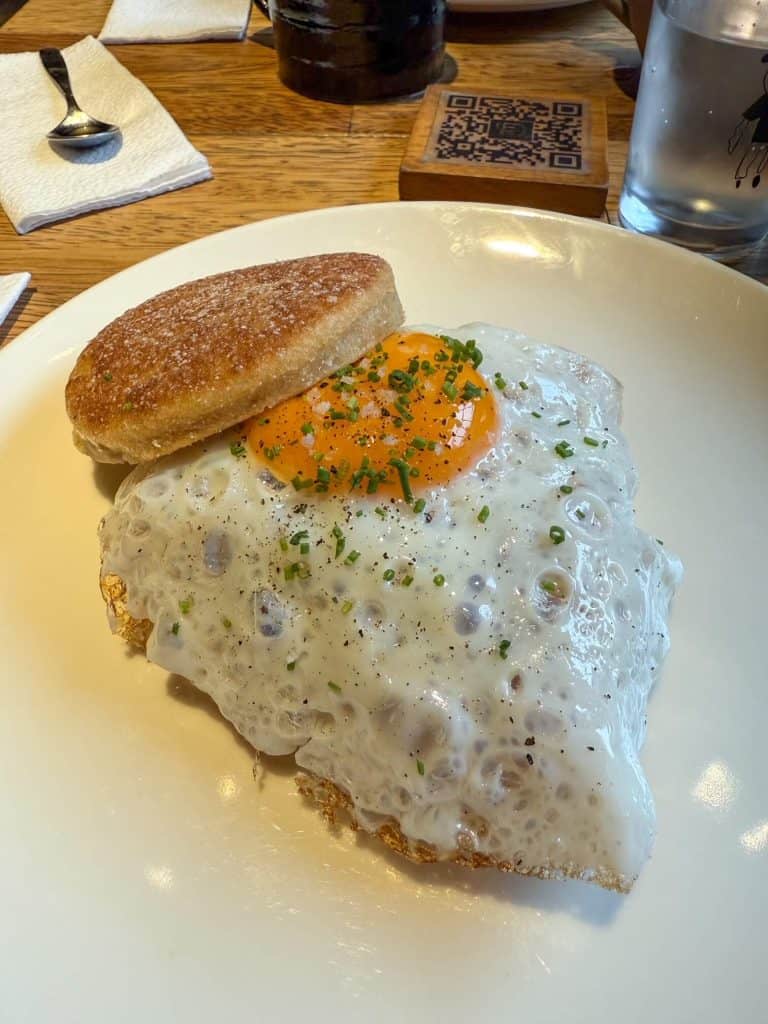
There are cafes all over Miraflores but a few that I think deserve a visit are:
El Pan de Chola – there are a few locations with one where you can sit down (see map below) and order with the other location a to-go only.
I had the egg and ham sandwich on an artisanal English muffin that was incredible!
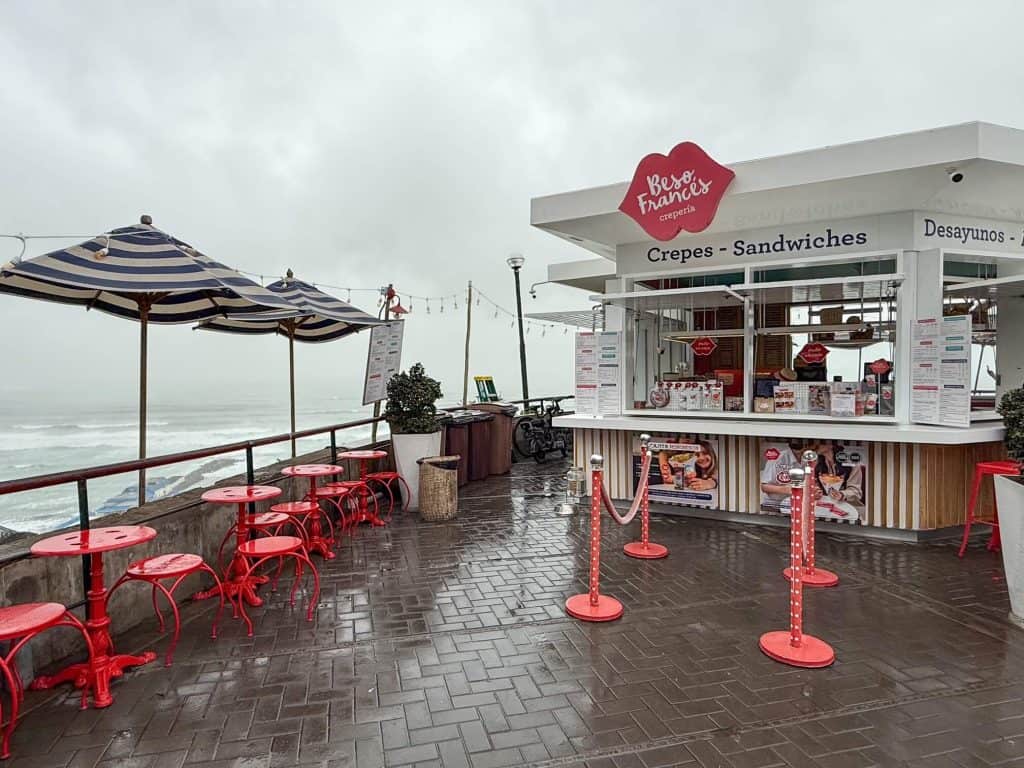

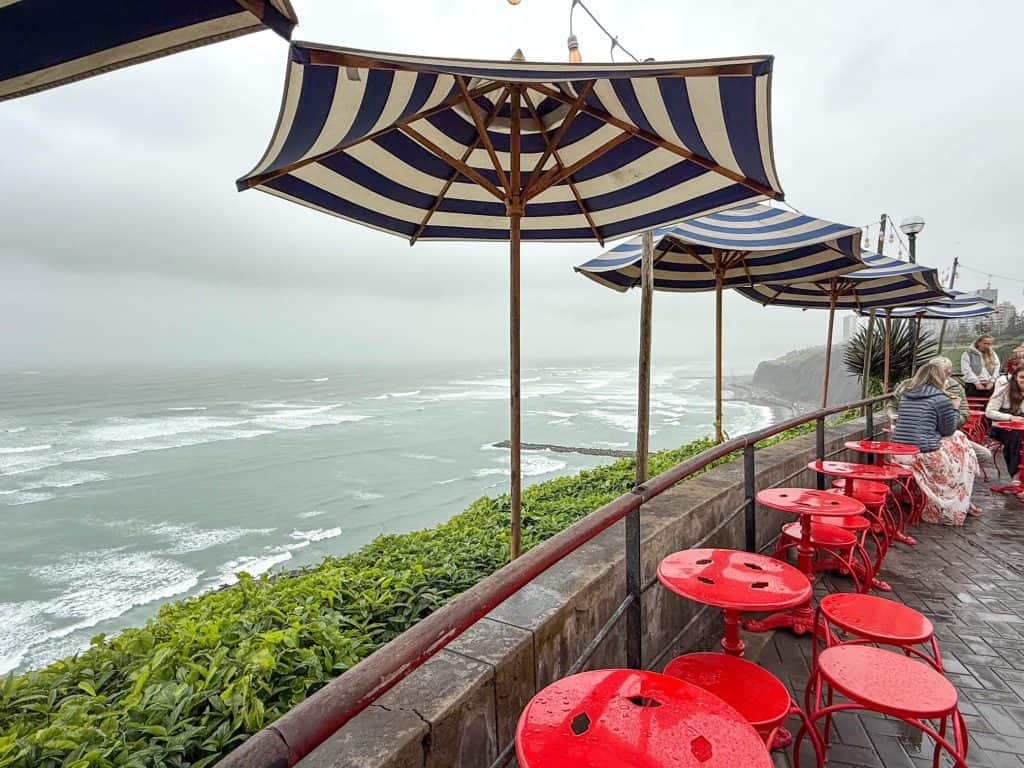
Besos Frances – there are a few locations throughout Miraflores but my favorite is overlooking the Pacific Ocean at the start of the Malecon de Miraflores.
At Besos Frances (French Kiss) they are known for their crepes so it wasn’t hard to decide what to eat. I had a crepe with bananas, strawberries, and Nutella sauce which was awesome.
18. Walk Malecon de Miraflores
If you are up for a walk, Malecon de Miraflores is the perfect spot as you have gorgeous view looking out over the Pacific Ocean.
The beauty and outstanding views make this stretch one of the prettiest places to visit in Lima.
Perched high up on the cliffs, Malecon de Miraflores runs along Miraflores’ coast with a meandering path running 6 miles (10k).
What makes it even more appealing to visit is the series of parks one after another each with their own theme.
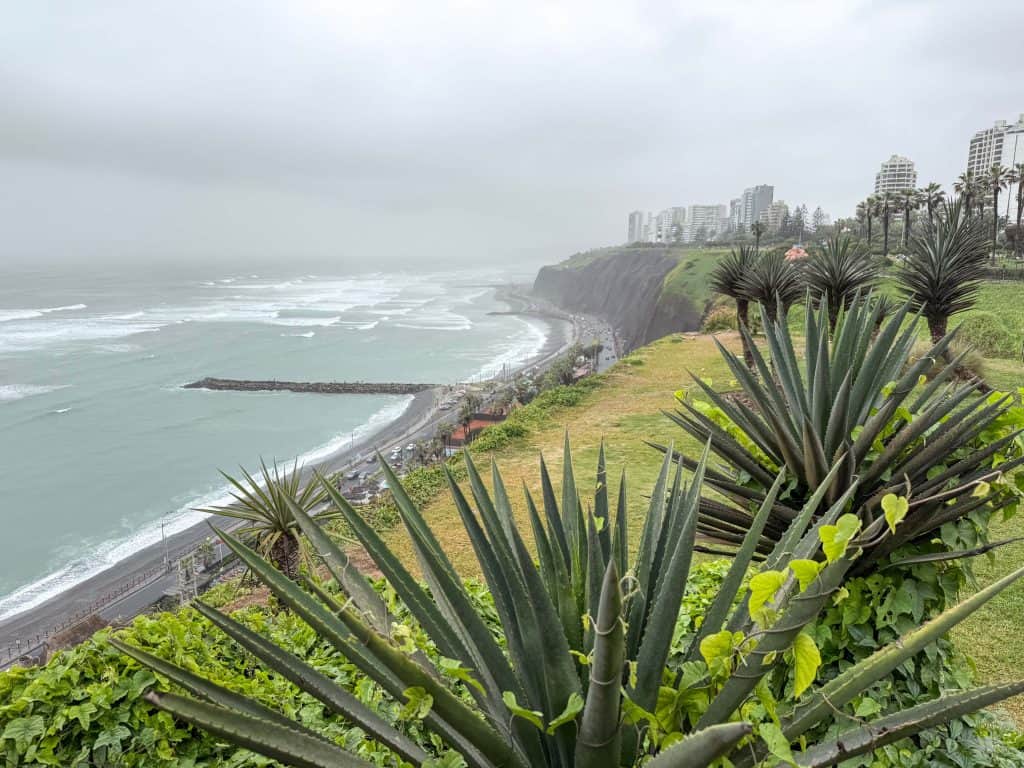
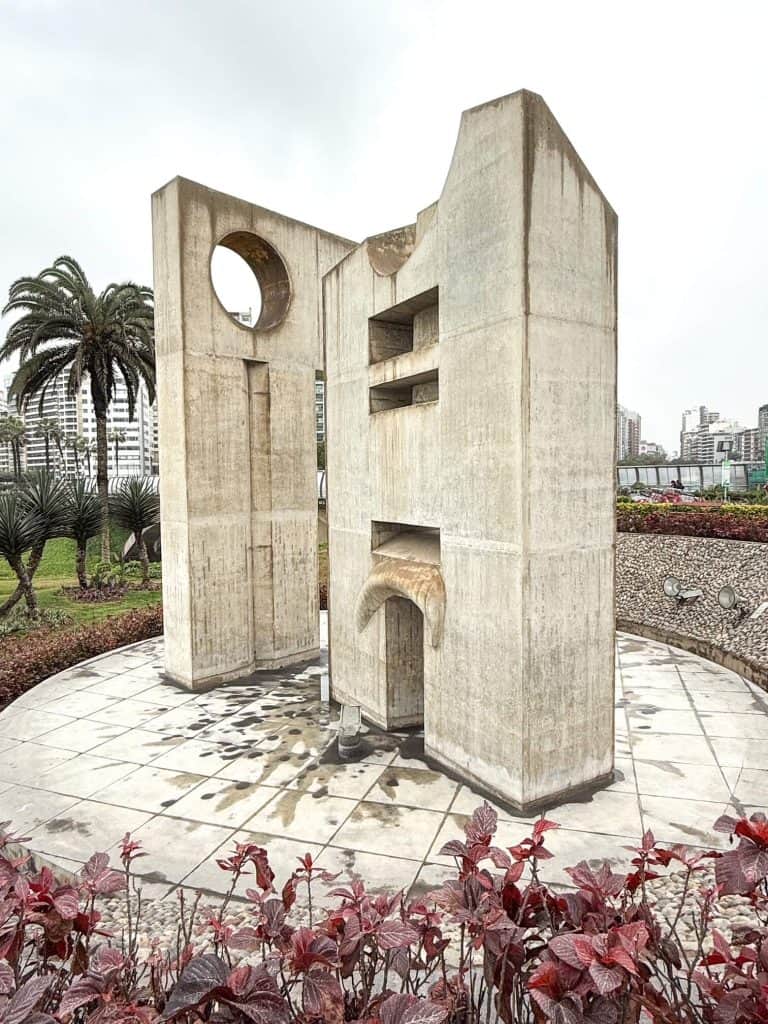
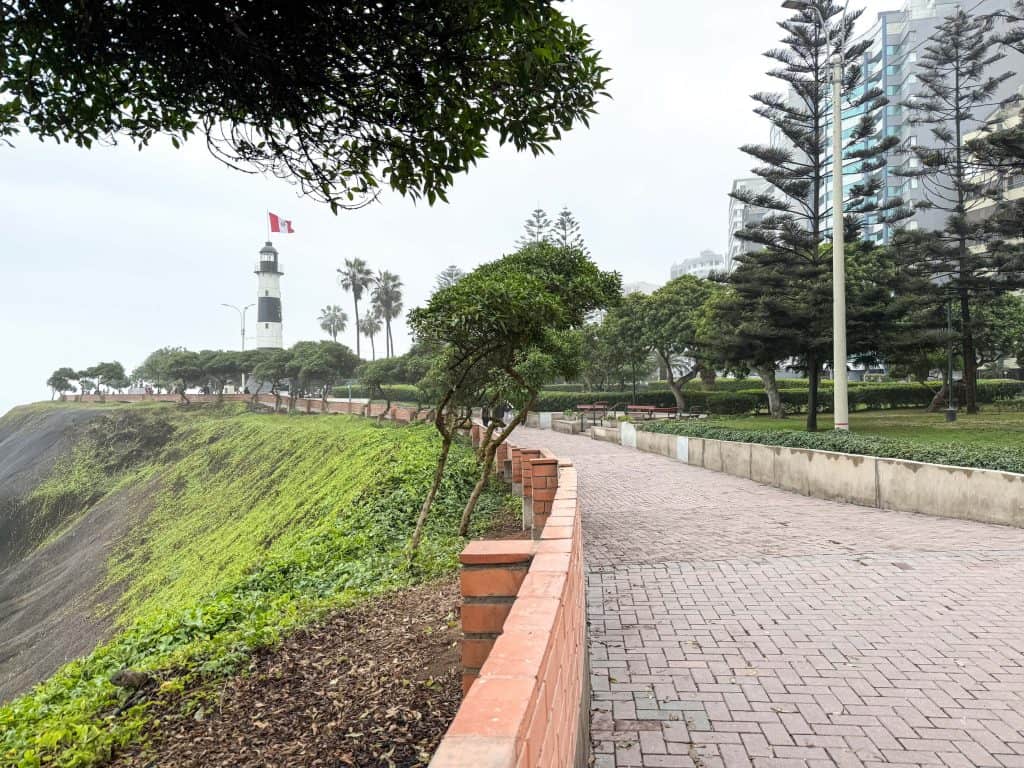
Ample trees, sculptures, art installations, and people watching make it a great place to get in a walk, run, or bike.
When you are strolling along Malecon de Miraflores the hustle and bustle of the city seems miles away and is a quiet escape in comparison.
Even on a cloudy and misty day like I had, I thoroughly enjoyed the park. But on a sunny day, don’t waste time getting here as I’m sure it would be breathtaking…
You could really spend as much time as you want but at least two hours to see the highlights.
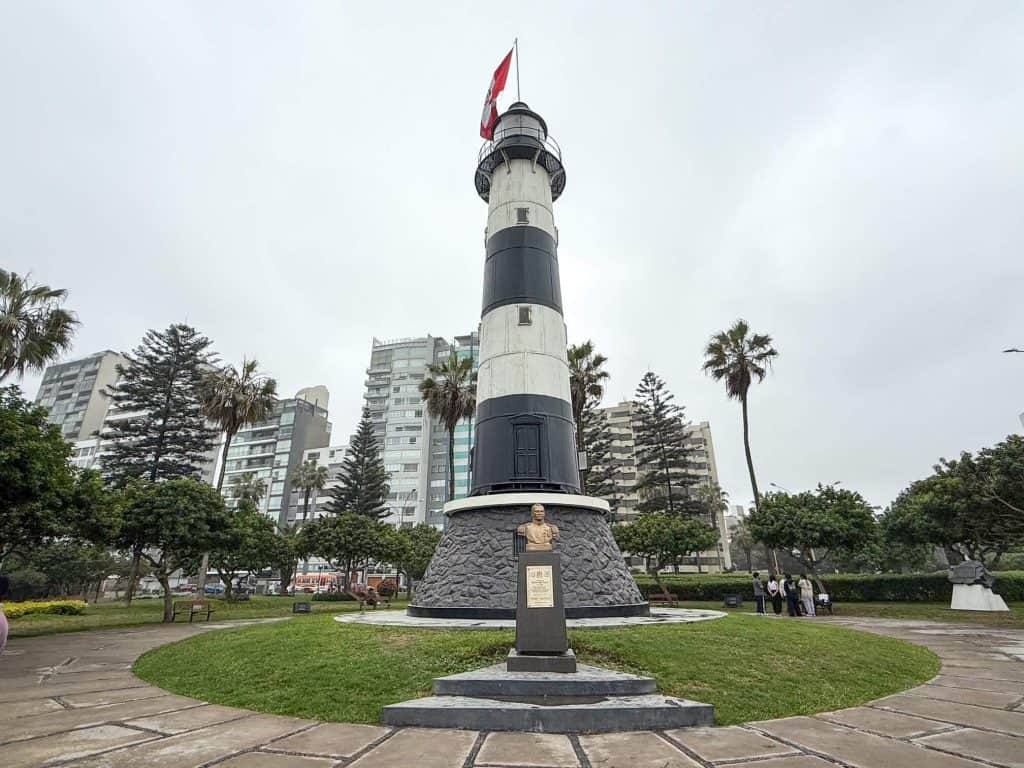
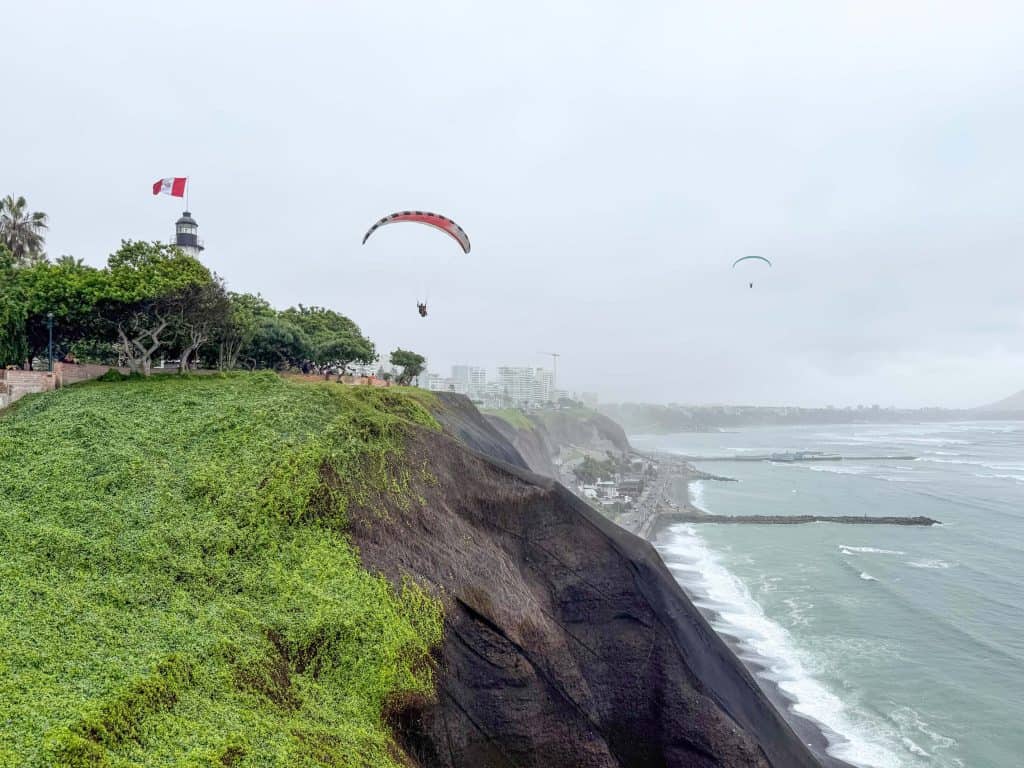
Keep reading to find out which two parks are a must to see within Malecon de Miraflores.
Tip: Besos Frances mentioned above is at the southern tip of Malecon de Miraflores. Grab a bite there and make your way north on the walkway after!
19. Parque del Amor
Parque del Amor or “Love Park” is true to its name as you do see many couples canoodling and looking quite smitten gazing at the views.
As part of Malecon de Miraflores, Parque del Amor is hard to miss for its larger than life statue of a kissing couple. Or known as El Beso or the “the kiss sculpture”.
The kissing sculpture is at the center of the park with a small, tiered amphitheater-like seating to enjoy at any time but especially at sunset.
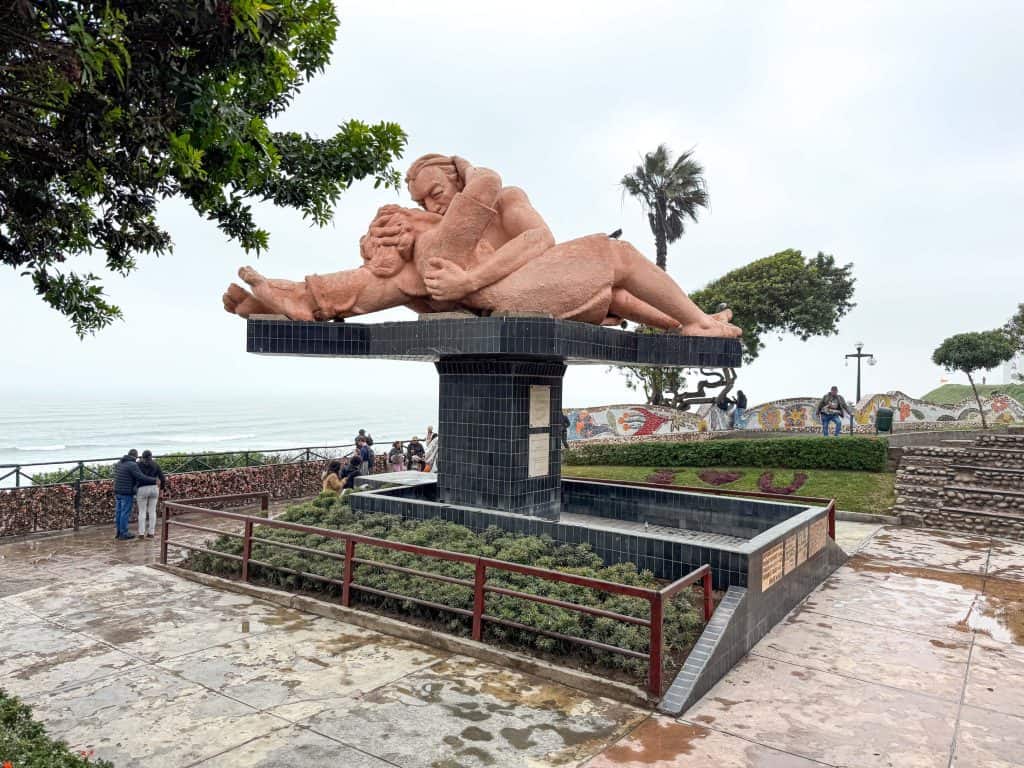
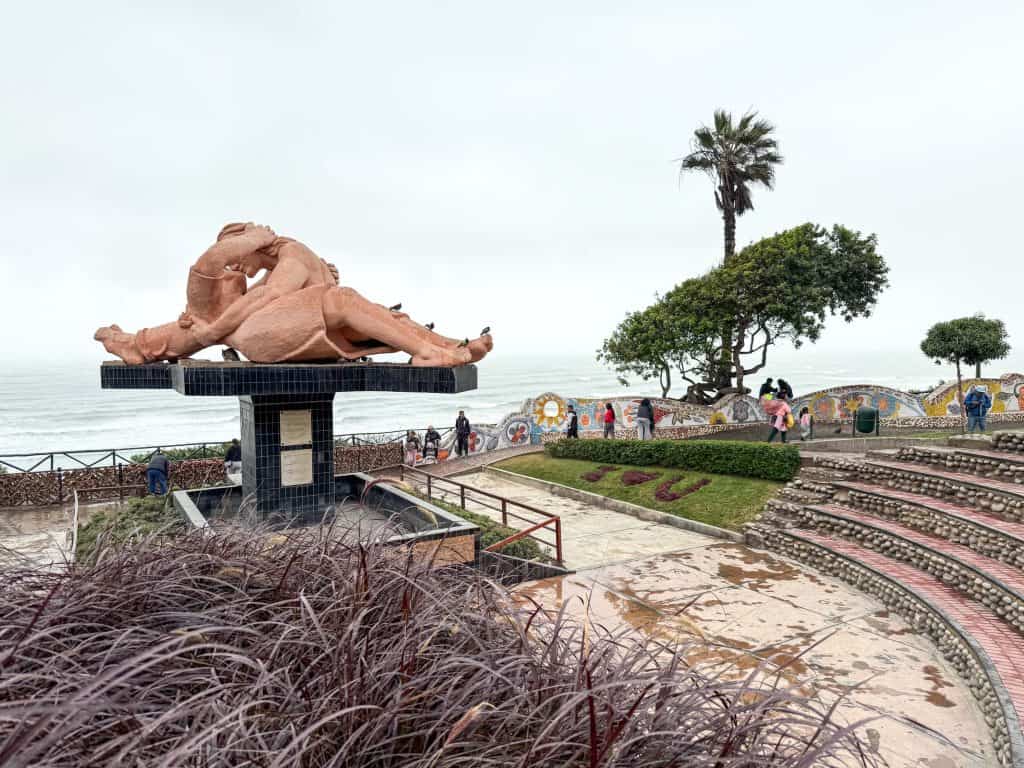
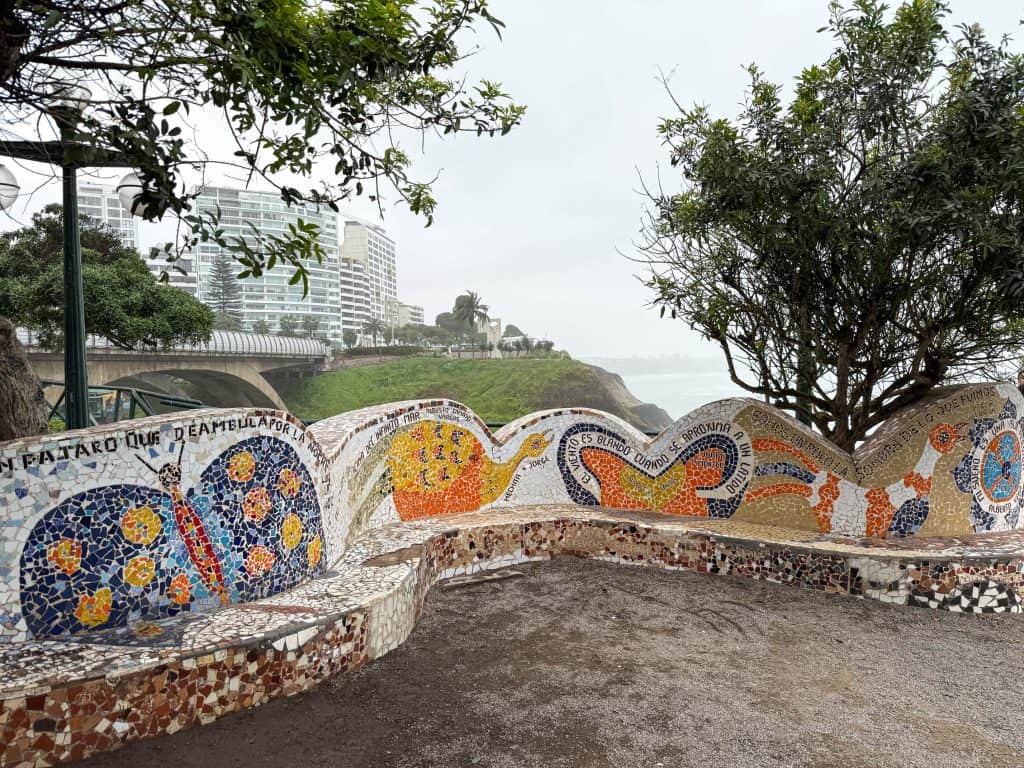
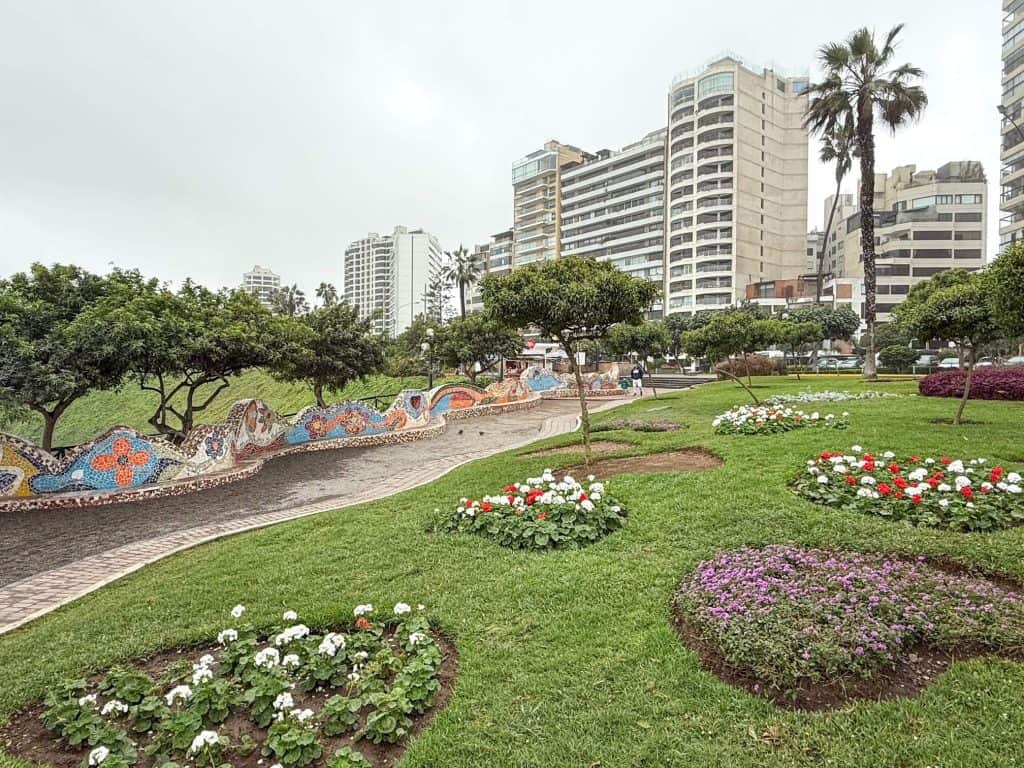
At the southern and northern sections of the park are colorful panels of tile mosaics that have various quotes about love.
If the style looks somewhat familiar, the design of the tiles was inspired by the design of Park Guell (Antoni Gaudi) in Barcelona, Spain.
Fun Fact: To add to the romance vibe, El Beso sculpture was open to the public on February 14th, 1993 (Valentine’s Day).
20. Chinese Park
If you are continuing north along Malecon de Miraflores walkway from Parque del Amor, you’ll come to Chinese Park (Parque Chino).
Upon reaching it, you’ll see an idyllic Chinese garden with a traditional design representing the culture.
The park was created in 2022 to celebrate the 200 year anniversary of Peru’s independence and 172 years since the wave of Chinese immigration began.
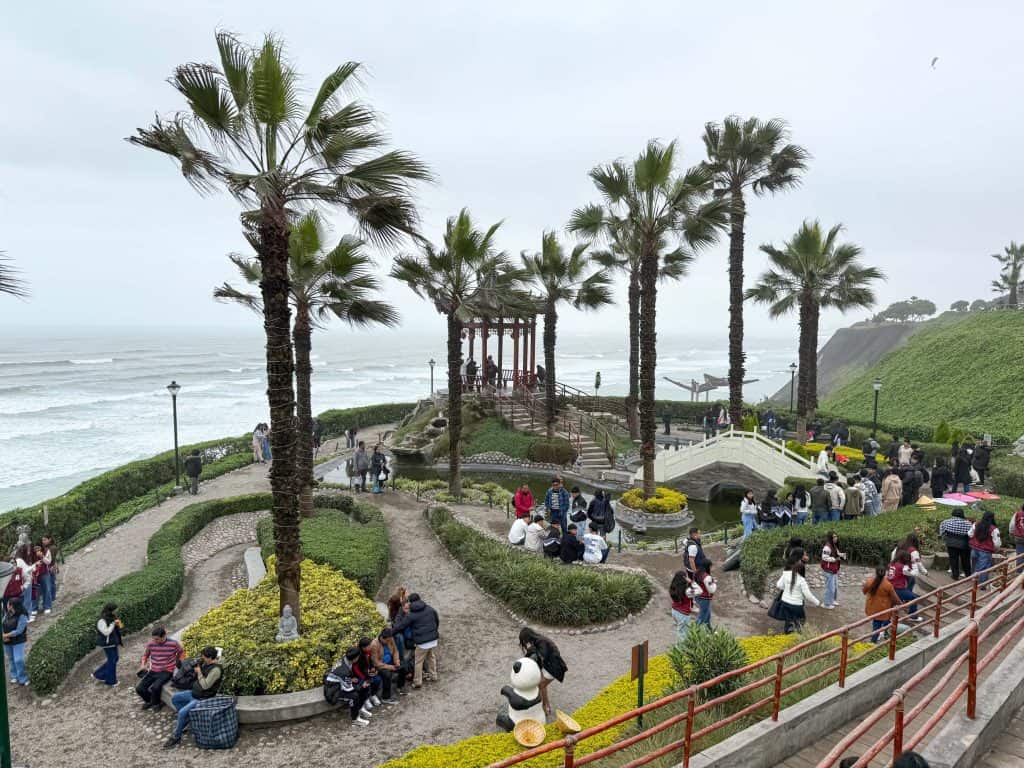
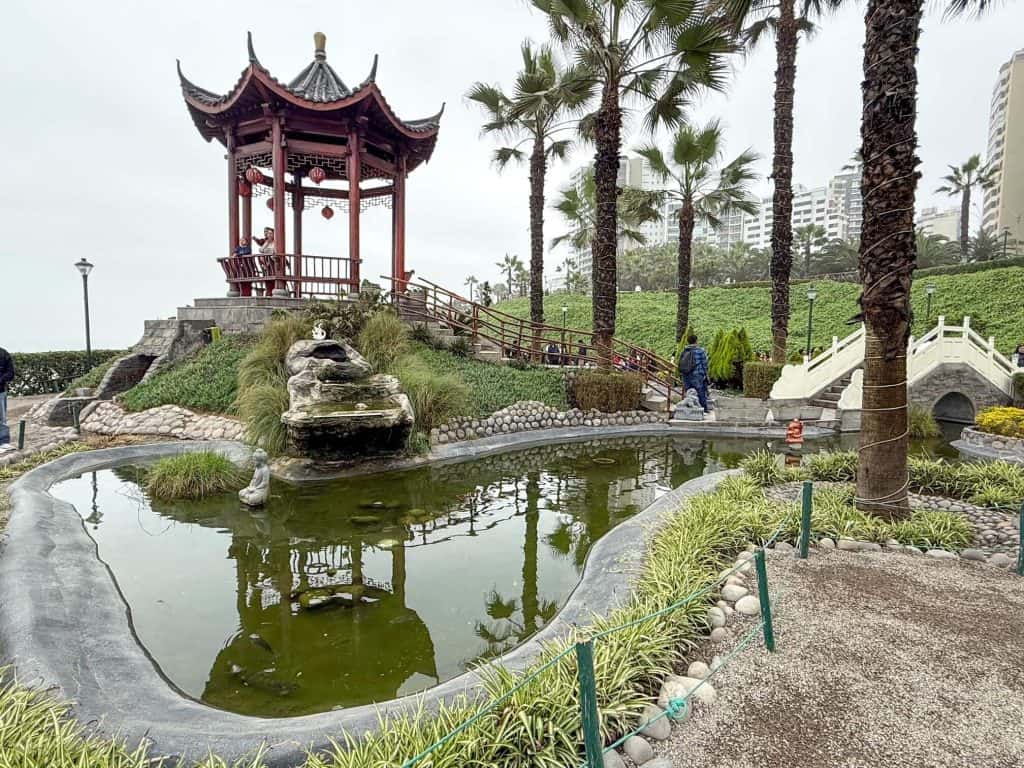
When you step foot into the garden, there is an immediate calming effect when you combine the Zen vibes with the sound of the ocean waves below.
Decorating the garden is a small coy pond, an arched bridge, a pavilion, Chinese guarding lion statues, and benches to sit.
It also happens to be a popular place for taking photos for the scenic layout and backdrop.
Tip: As with anywhere along Malecon de Miraflores, this is a wonderful spot to watch the sunset on a clear day.
21. Huaca Pucllana Pyramid
In the midst of modern buildings within the northern part of Miraflores neighborhood is Huaca Pucllana.
Huaca Pucllana is an ancient archeological site dating between 200 AD – 700 AD way before the Inca civilization.
Referred to as a pre-Inca settlement, this clay and adobe 82-foot (25 meters) pyramid is only recently been discovered in 1981.
Well, recent in the big scheme of history as the pyramid structure from remained covered by dirt for years.
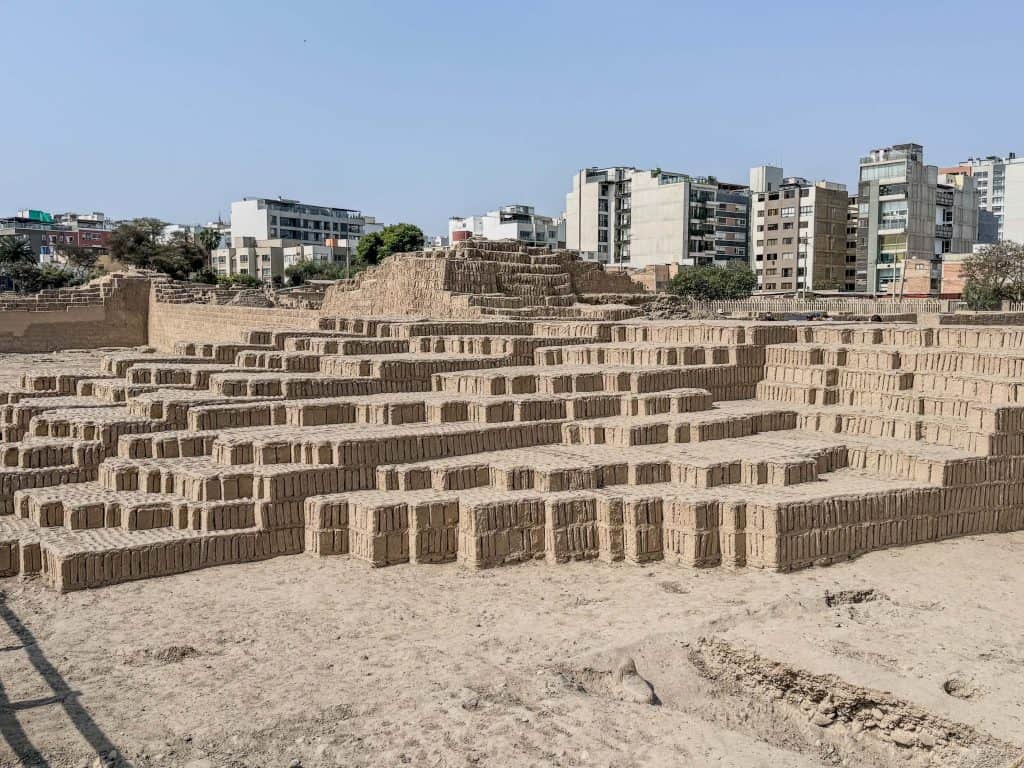
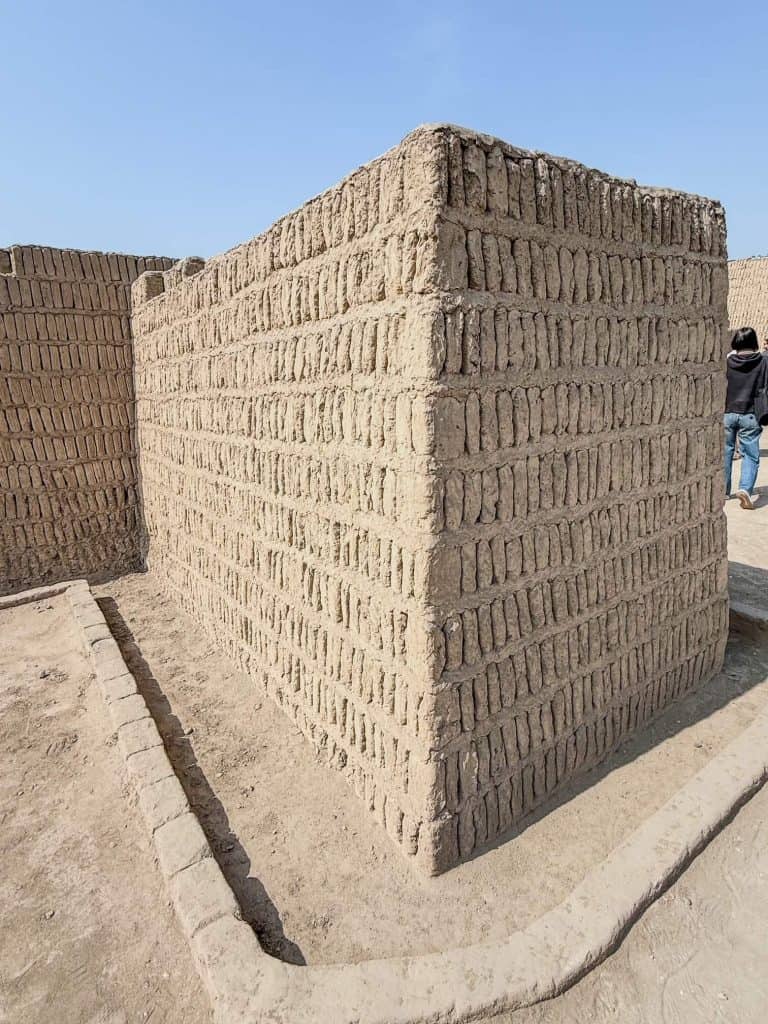
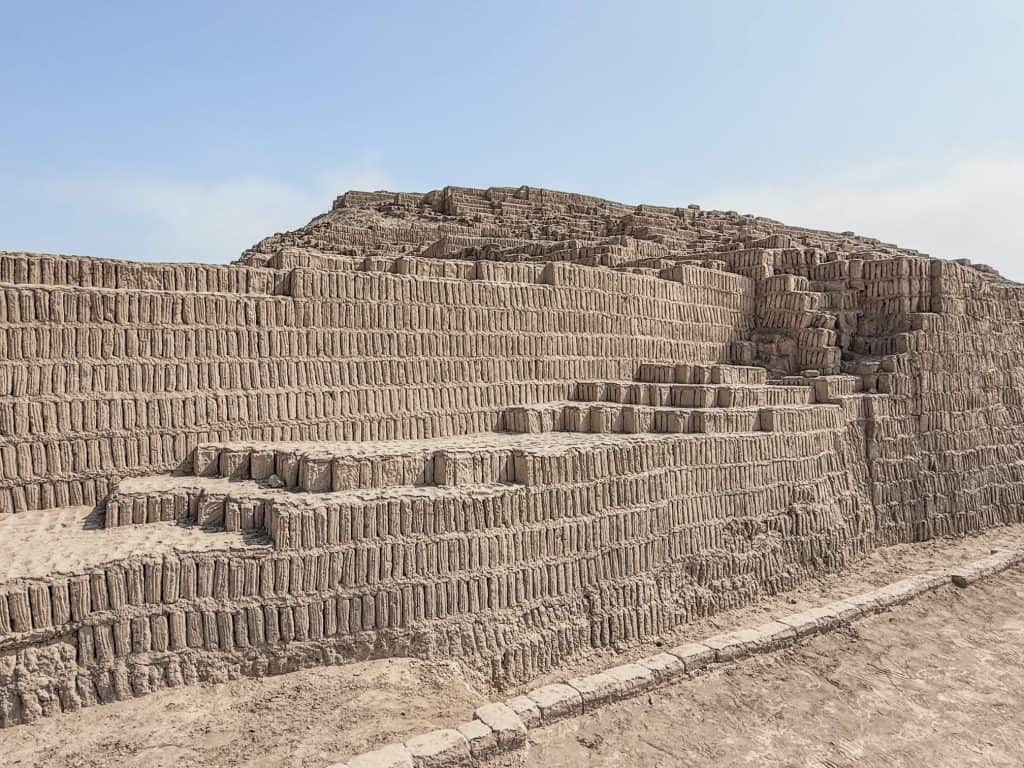
Huaca Pucllana was unveiled when work began to build buildings as the city was expanding closer to the ocean.
Today it completely stands out as it is surrounded by tall residential and commercial buildings.
Thankfully the site was protected from demolition and excavation is still ongoing. Every few years more and more of the hidden pyramid will be exposed.
If I remember correctly from the tour, it will take an estimated 25+ years to uncover it all.

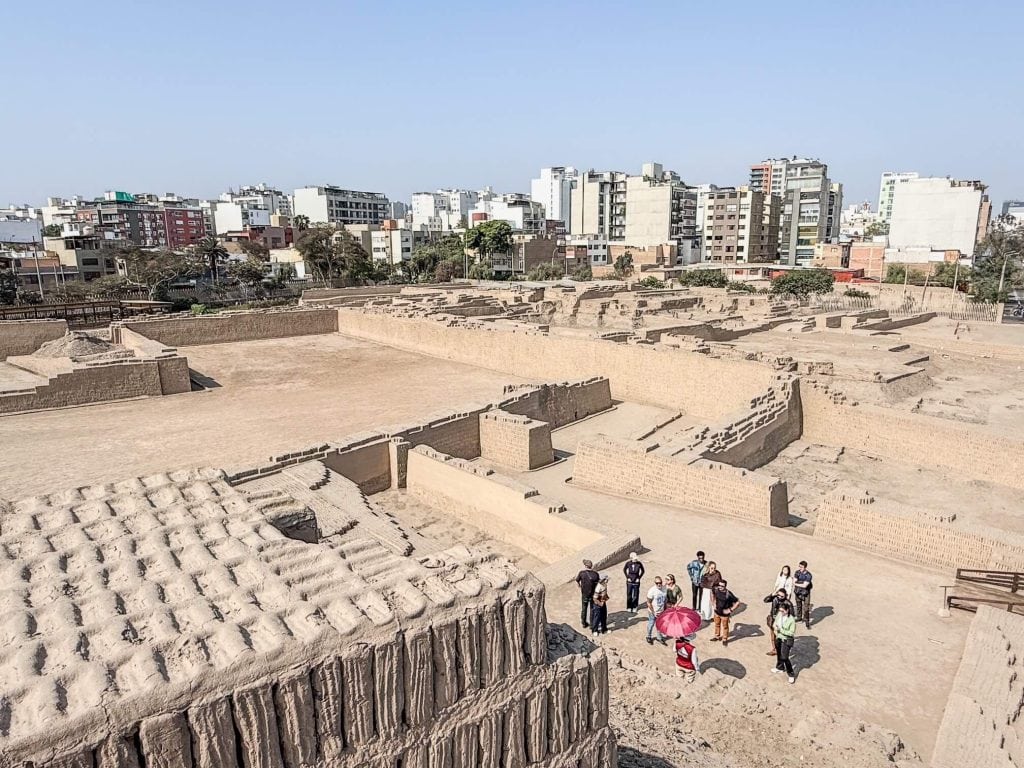
At Huaca Pucllana, three civilizations lived here from the period of 200 AD to the early 1500s.
- Lima people (200 AD to 700 AD)
- Wari people (800 AD to 900 AD)
- Ychsma people (1000 AD to 1532 AD)
It is fascinating to see how the Lima people built the pyramid using a special “bookcase” technique that would withstand earthquakes.
How they figured all this out in 200 AD is shocking and quite impressive to see.
Note: To enter, you must take a guided tour. You are not able to walk around freely. Tours start in English and Spanish every
Tip: If you want to get a meal or coffee, there are two great spots bordering the ruins. One has direct views of the ruins – Huaca Pucllana Restaurant and Gianfranco Café.
22. Mercado de Surquillo
If you want to see where the locals shop, head to Mercado de Surquillo.
The markets in any big city is a maze of vendors selling fruits, vegetables, spices, nuts, bread, fish, meats, and everyday items.
Mercado de Surquillo is a vibrant section of Lima where tourists don’t venture but should!
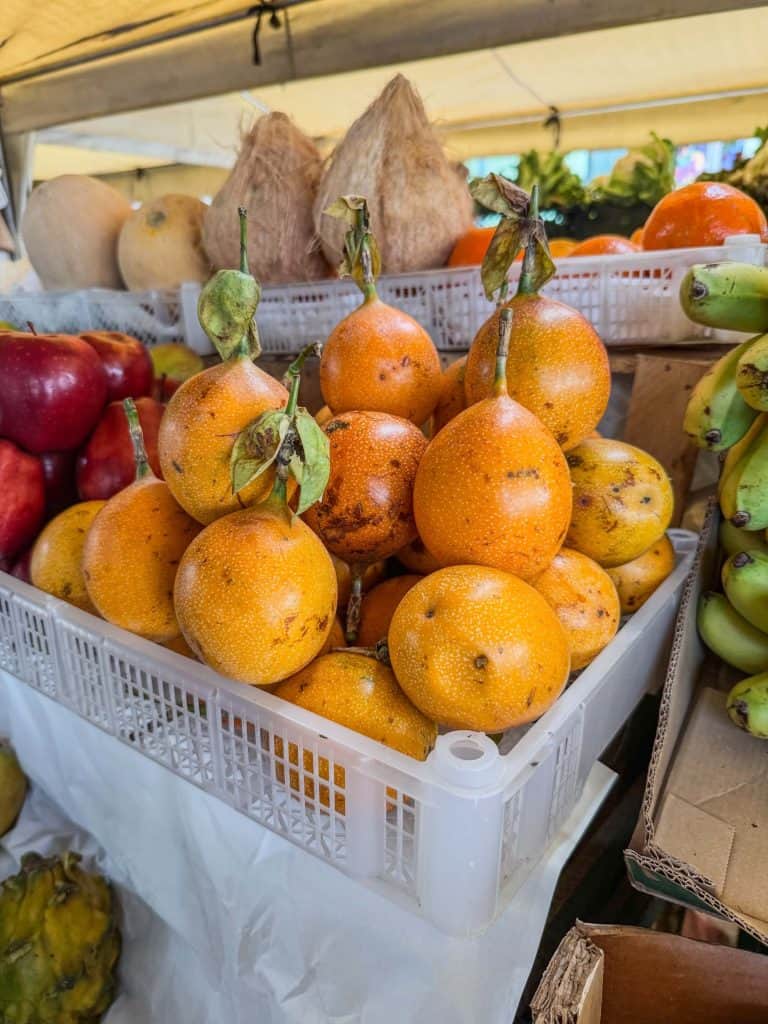
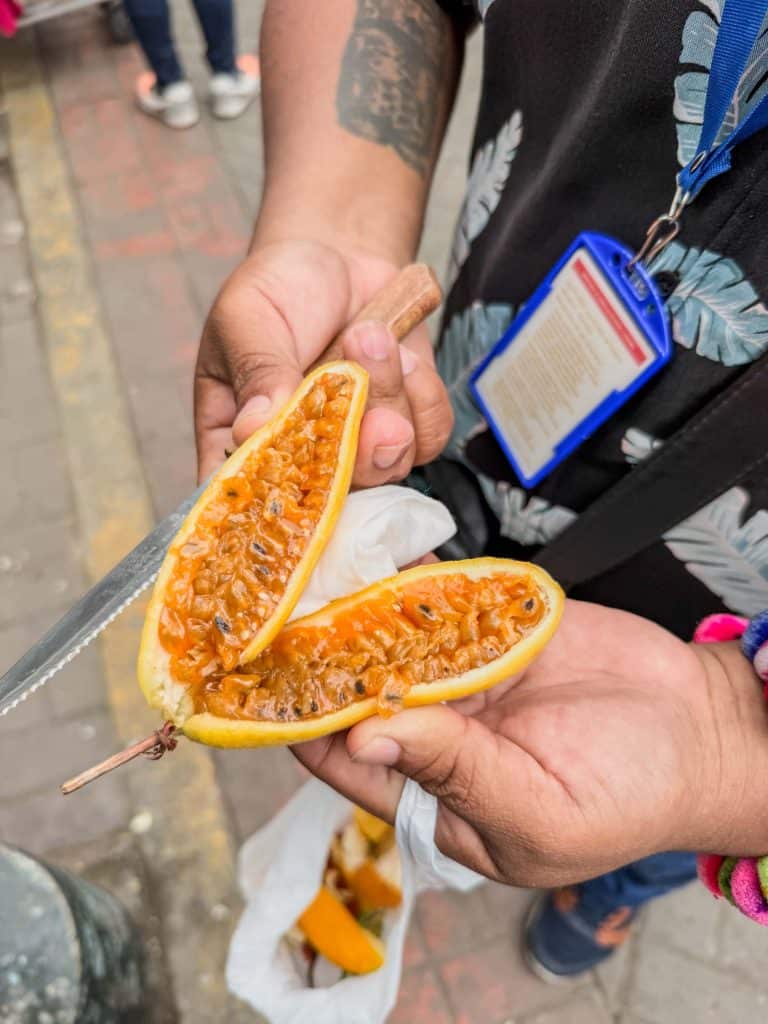
Entering the market and knowing where to go and which vendors you can eat from can be intimidating even for an experienced traveler like myself.
And it’s why I always hire a local to take me to the best stalls with the opportunity to try fruits and dishes that I have never seen before.
My guide shared all of his favorite fruits and I couldn’t try enough. Every exotic fruit was so sweet and flavorful.
Come hungry as you’ll have the opportunity to sample awesome ceviche Peruvian-style, arroz con pollo, and chica (a corn-based beer).
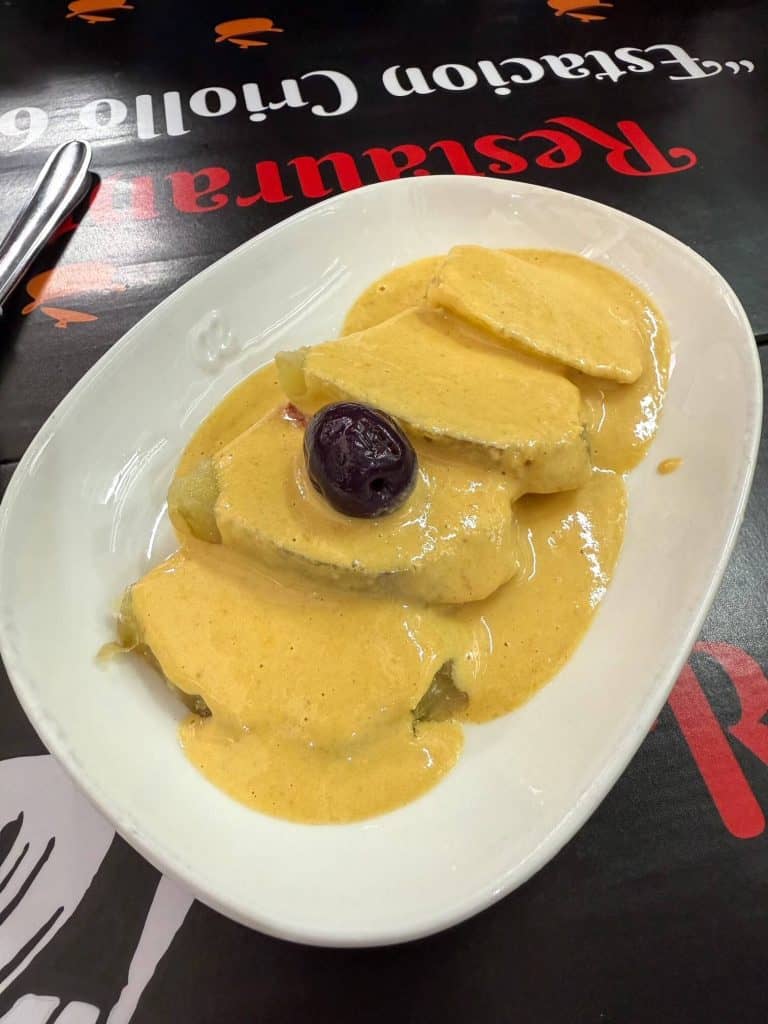
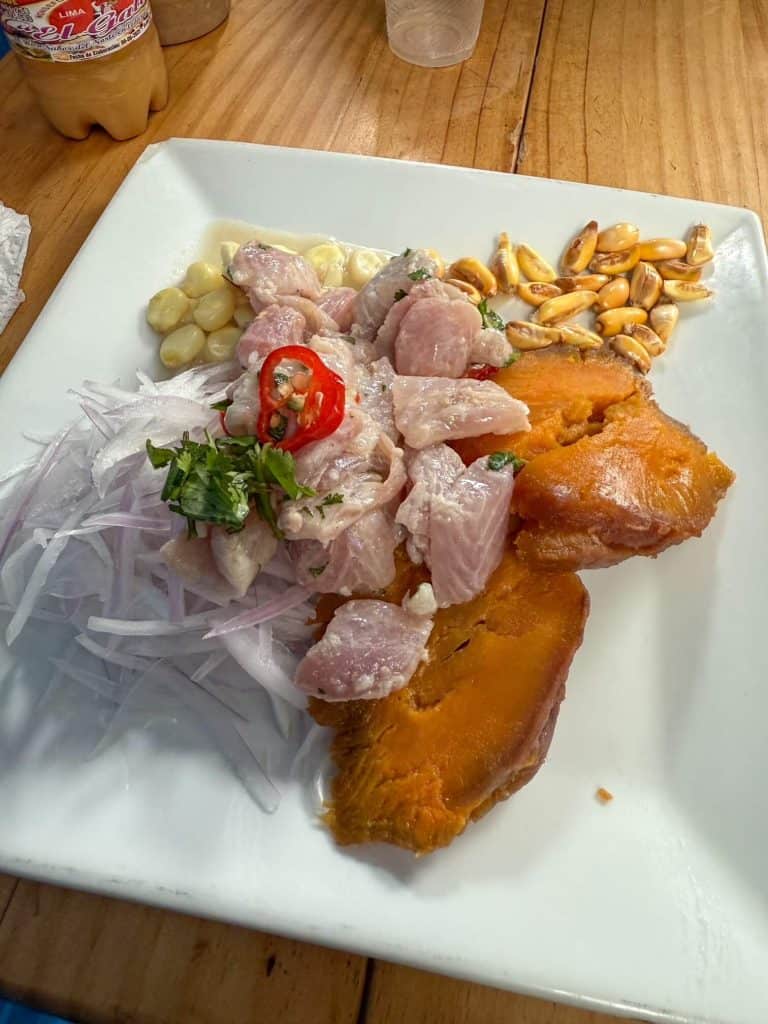
There is a Mercado de Surquillo #1 (built in 1952) and Mercado de Surquillo #2 (built in 1955).
If you go on this market tour, you’ll get to visit both and go to the fish market down by the pier.
Book This Fun Markets Food Tour!
23. Parque Salazar
It isn’t likely that visiting a shopping mall is high on your list but Larcomar Shopping Mall is worth checking out for the views alone.
Up high built into the cliffs overlooking the Pacific Ocean is Larcomar, a shopping and entertainment center.
Situated on top of the shopping mall is Parque Salazar and much like all the parks along Malecon de Miraflores has breathtaking coastal views.
It is a nice location to go for a walk, see art installations, and even spot one of two Paddington Bear statues in Peru!
Tip: If you are heading to Aguas Calientes (town at base of Machu Picchu), you can see the other Paddington statue.
24. Parque Kennedy (Cat Park)
Parque Kennedy has inadvertently become famous for its residents – cats!
The park itself is a large and lovely space in the center of upscale Miraflores surrounded by tons of great eateries, hotels, cafes, shops, and a hub of activities.
Named after John F. Kennedy the 5+ acres is lined with walkways, trees, and flower beds.
So, where did all the cats come from?


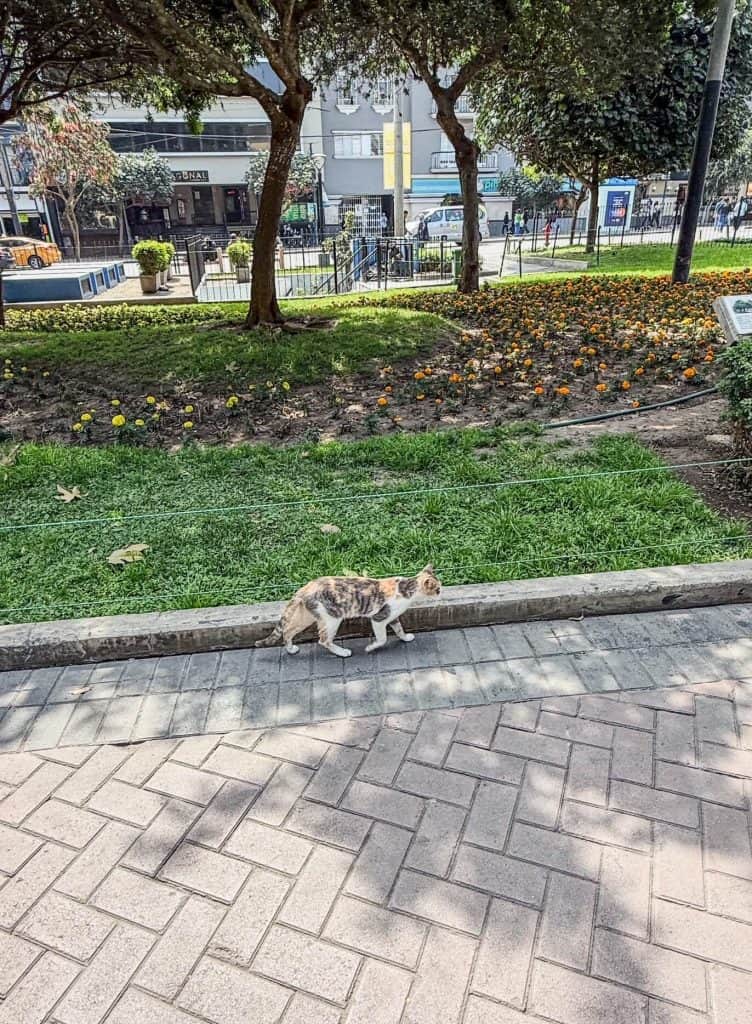
The feline locals have called Parque Kennedy also known as “cat park” home since the 1990s.
They were brought in to clean up the rat problem and ended up staying. It seems every stray cat in Lima got the memo that this is the place to be…
Once your eyes adjust, you’ll see cats all over! Nestled in the flower beds, up trees, on benches, and napping in their “cat houses”.
Locals provide food and they all seem well taken care of and healthy. Some are very affectionate and others not so much.
Throughout the year you’ll see various celebrations, festivals, and art shows taking place here.
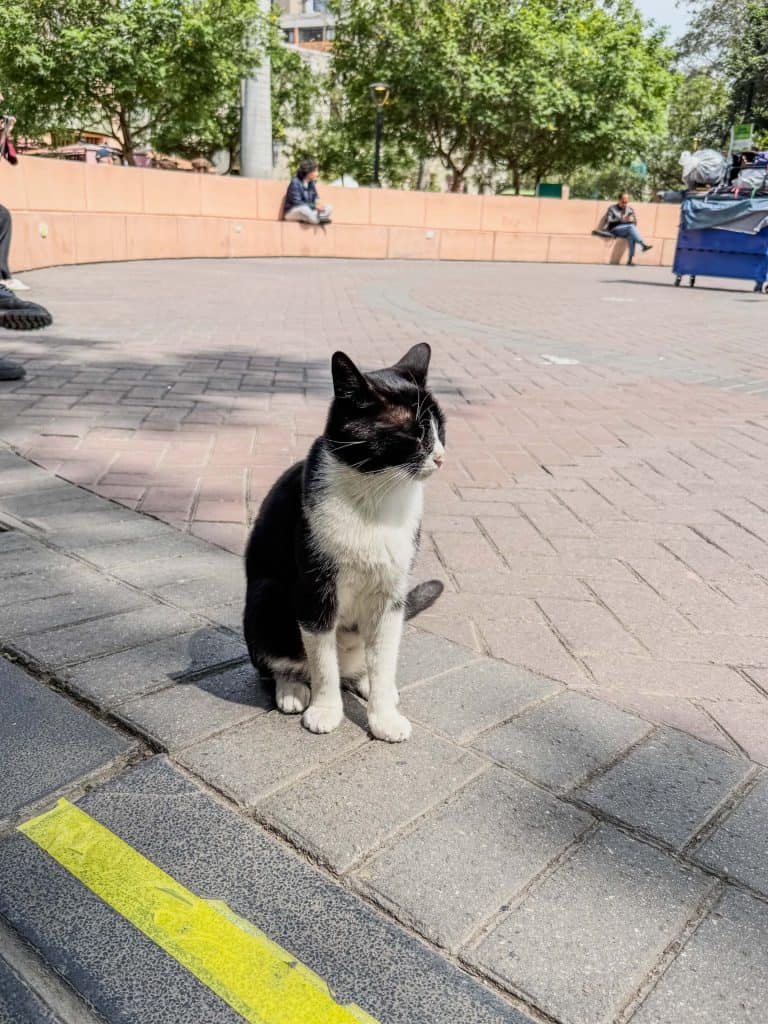
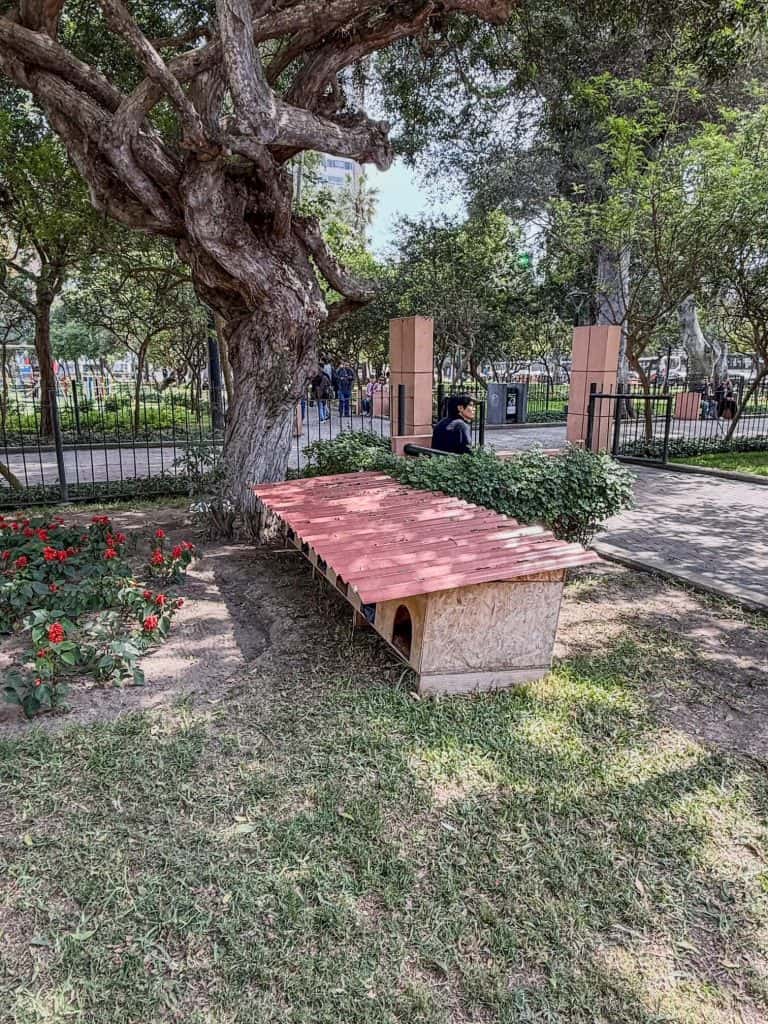
Inside the park there is also the Virgen Milagrosa Church, artisans selling their work, live music, and tons of great food vendors.
One of the most famous food vendors is Picarones Mary who was featured on the Netflix show “Street Food Latin America”.
She’s been serving up picarones (sweet potato doughnuts) that come out warm and covered with a glaze.
Tip: To see the cats, go during the morning or afternoon when they are more active. For picarones, go in the afternoon/evening.
25. Savor An Epic Peruvian Dinner
Of any neighborhood in Lima let alone in all of Peru, Miraflores likely has the highest number of incredible restaurants and eateries in one spot.
And what’s even more amazing is the high quality of flavors you’ll find at all of these from casual to upscale.
There is no shortage of top-notch places to eat in Miraflores but one recommendation is to make sure you have a traditional Peruvian meal.
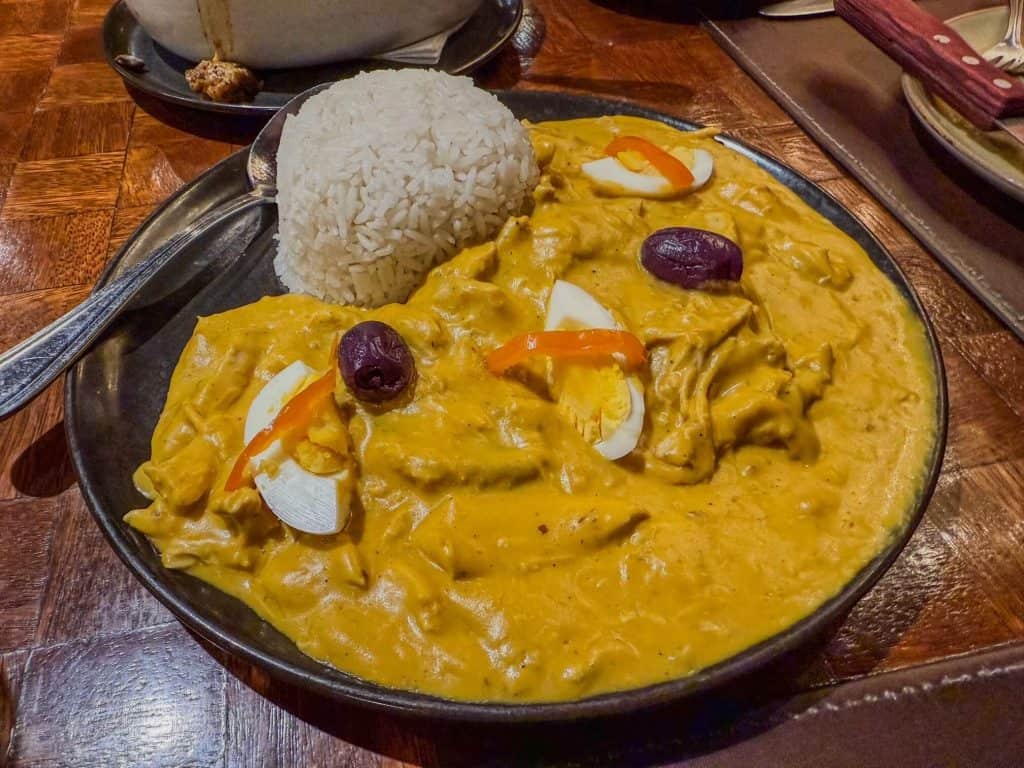
Some menu items to look for are:
- Lomo Saltado
- Ceviche
- Causa
- Aji de Galina
- Chicharron sandwich
- Arroz con Pollo
I could write an entire post on just the places to eat as there are so many but a few you shouldn’t miss are:
- Panchita
- El Bodegon
- Huaca Pucllana Restaurant
- La Lucha Sangucheria Criolla
Barranco Neighborhood
Barranco is the neighborhood bordering the southern part of Miraflores and a hotspot for restaurants, cafes, and art.
A great way to see Barranco is on this awesome walking food tour I took on my first day in Lima!
26. Municipal Park
Compared to the Historic District and Miraflores, Barranco is quieter and has a noticeable slower pace.
It feels more like a real neighborhood rather than a tourist spot yet it has so many notable eateries, coffee shops, and bars that it is worth visiting at least one day on your trip.
In the heart of Barranco is Municipal Park that is a nice place to relax on a bench, people watch and view some art.

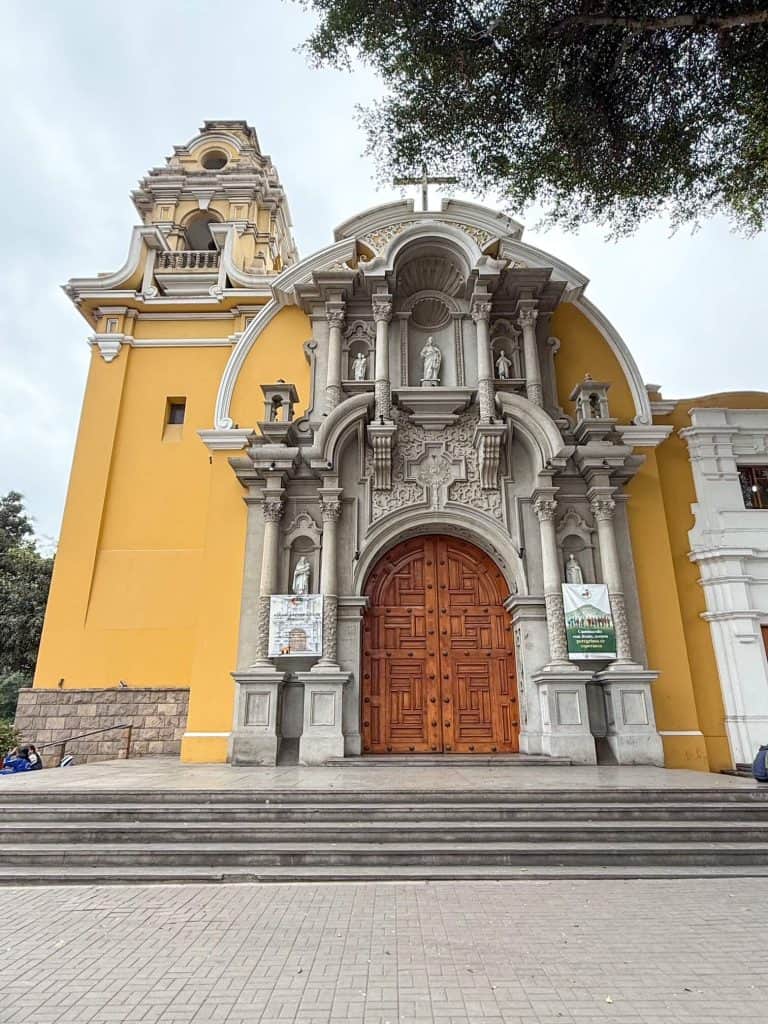
At the center of the square is a water fountain with a statue of Venus (La Donaide).
Across the street on the one corner is Parraquia La Santisima Cruz (church) with its bright yellow exterior and colonial architecture.
Tip: Feeling thirsty? On the western side of the park is Juanito de Barranco which serves awesome Pisco Sours.
27. Admire Vibrant Street Art
Barranco definitely lives up to its name a Bohemian art district. Art murals grace countless buildings and walls throughout the neighborhood.
That’s what makes Barranco such a fun area to explore on foot and just wander, finding street art around every corner.
One street that is lined with art murals is along Bajada de Banos.
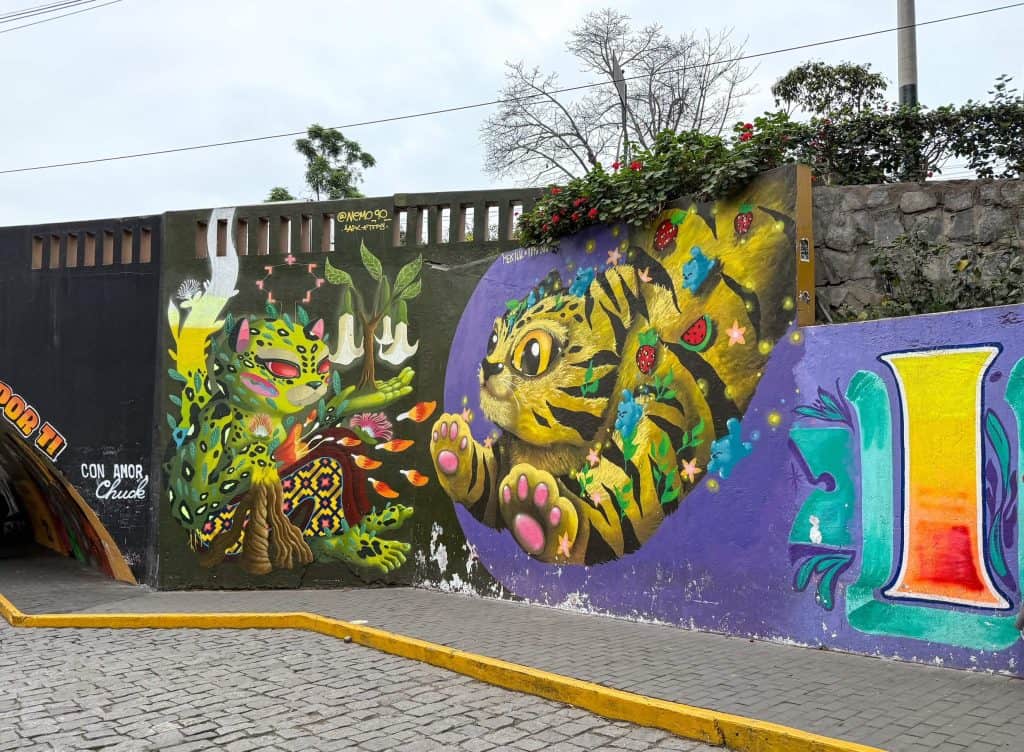
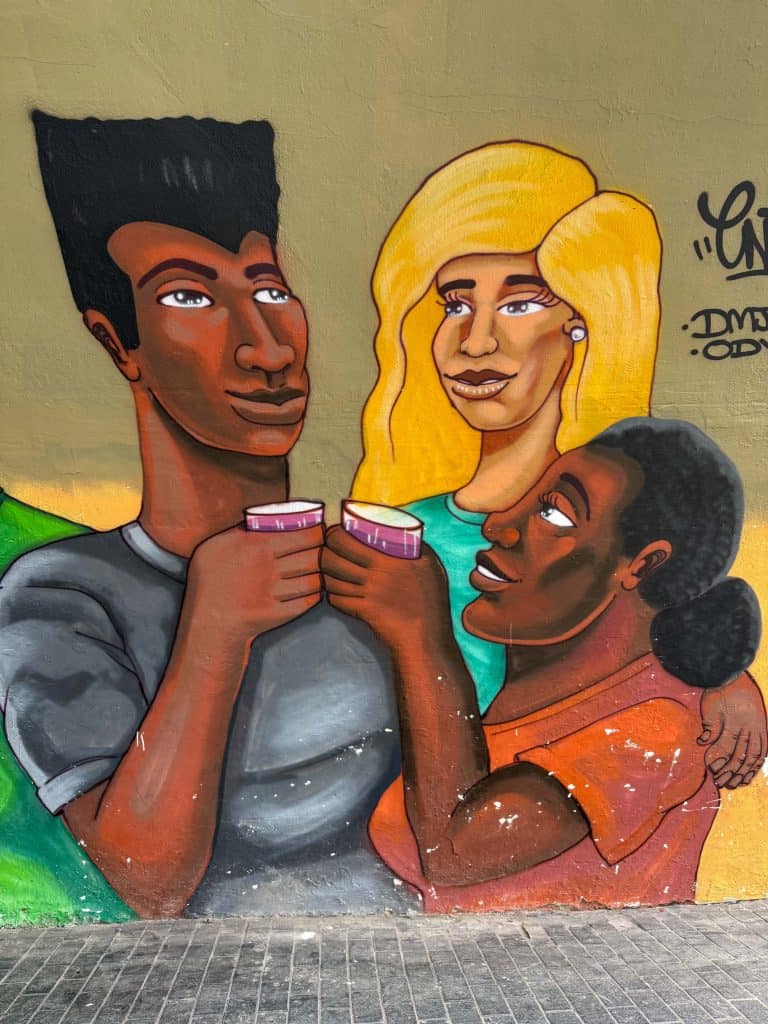
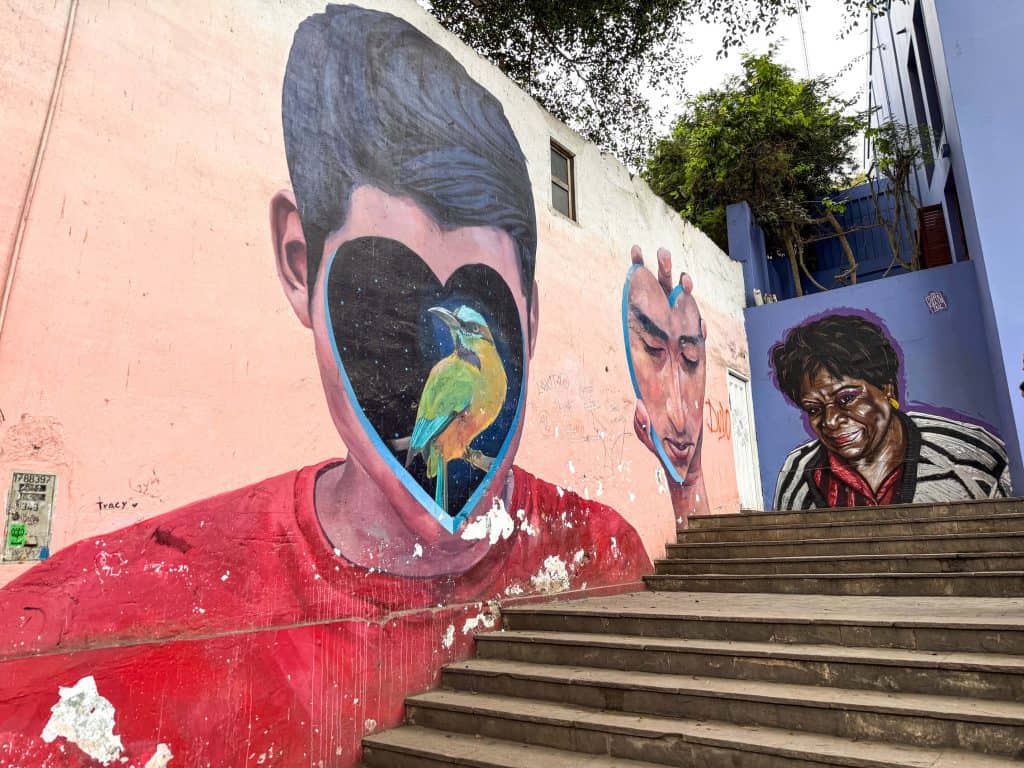
In fact, Galeria Jade Rivera World is a lovely art gallery of a local artist on this walkway. Pop in to see his art as it is very eye-catching.
Jade Rivera is one of the most famous art muralists in Peru but in the gallery you’ll find smaller paintings, sculptures, and pieces that you can transport home.
As you continue down the path towards Sighing Bridge, you’ll see a series of murals including underneath the bridge and up the stairs to the bridge.
One mural to make note of is the one by Jade Rivera going up the stairs as it is a much larger and colorful version of one of his pieces in the gallery. This mural is called “Home of Sighs”.
28. Puente de Los Suspiros (Bridge of Sighs)
Steps up from the Home of Sighs art mural is Puente de Los Suspiros (Bridge of Sighs).
It is one of the most popular sites in Barranco drawing both locals and tourists as it makes for the perfect photo backdrop.
The narrow pedestrian-only wooden bridge was built in 1877 to connect Ayacucho Street to Santisima Cruz de Barranco (church).
At one point there was a stream that ran underneath but today it is a paved path that leads down to the beaches.
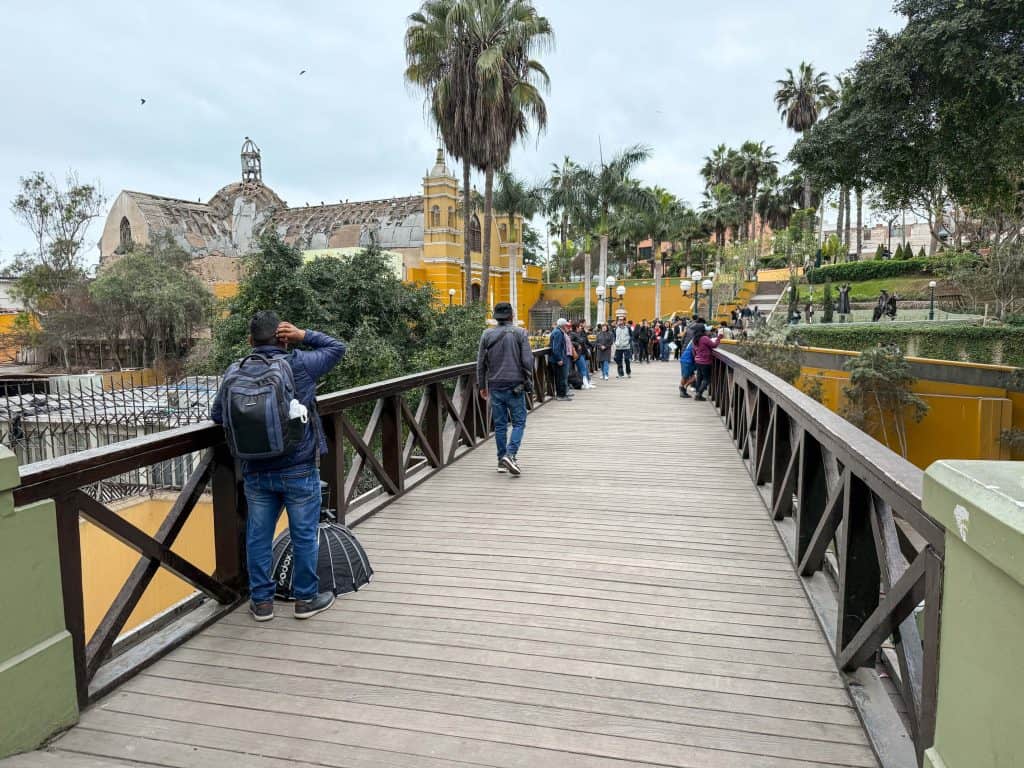
The church is now abandoned due to damage but still a historic site and gathering spot for those coming and going on the bridge.
A common sight on the bridge are young couples on a date or those hoping their wish comes true.
The legend says that if you make a wish and are able to cross the 144-feet (44 meters) long bridge holding your breath that it will come true.
It can be done! I took a deep breath and walked at a fast pace across before gulping in some air.
The jury is out on whether my wish came true…
29. Museo de Arte Contemporaneo (MAC)
With its abundance of art, it isn’t surprising that Barranco is home to Museo de Arte Contemporaneo (MAC).
Focusing on modern and contemporary art, MAC has three large exhibition buildings showcasing some permanent and some rotating pieces.
From the street view, the exterior design is very modern with the front wall all glass.
Usually, modern art isn’t my favorite but this one I really enjoyed visiting especially for the black and white photographs of local Peruvian people.
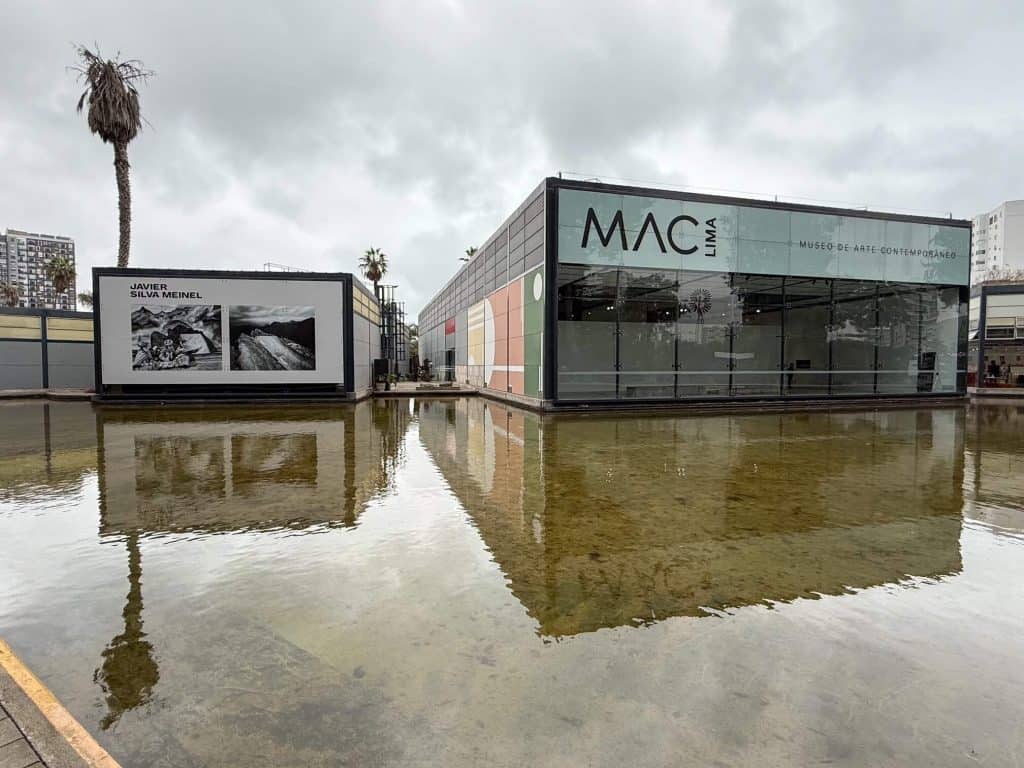
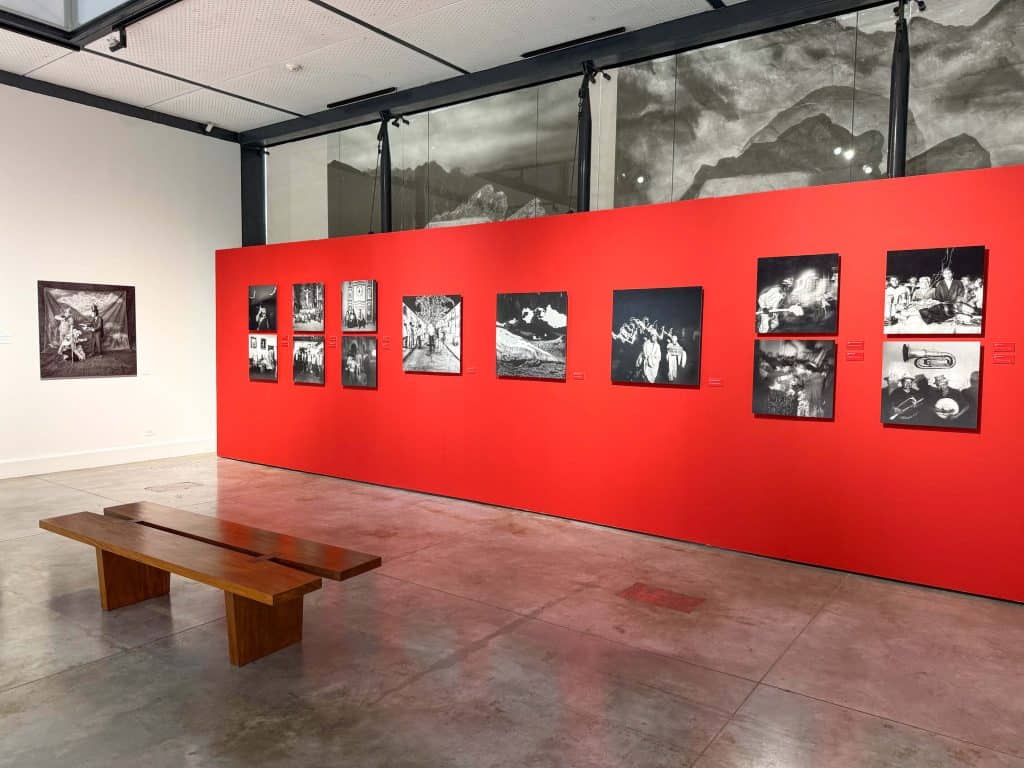
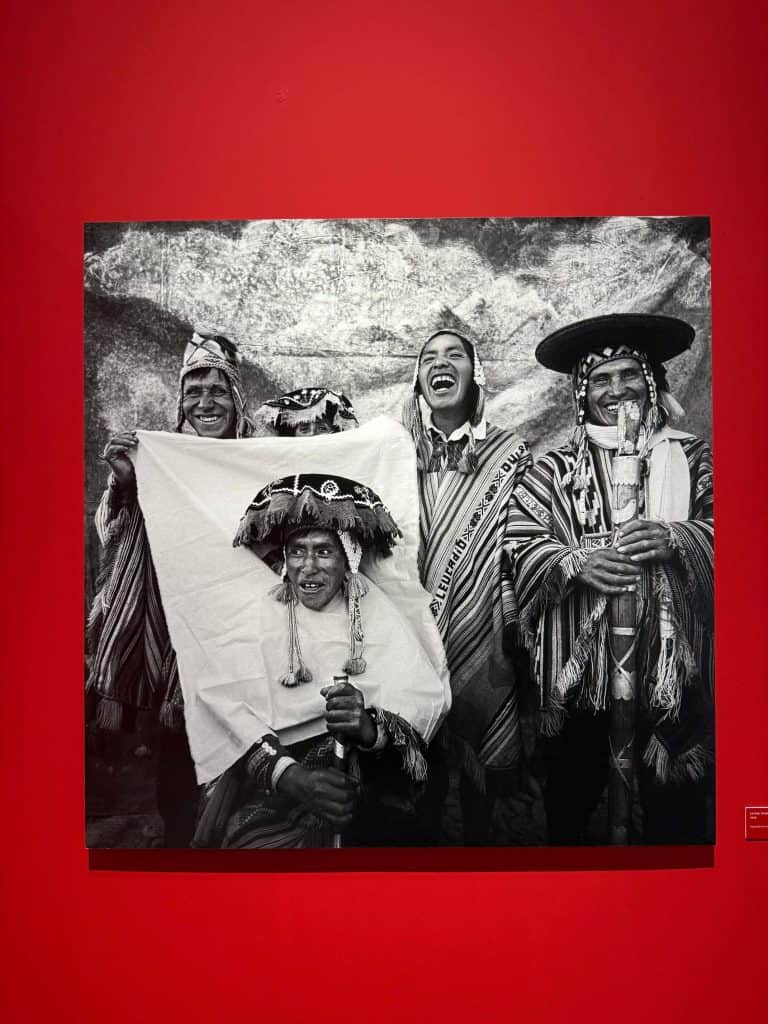
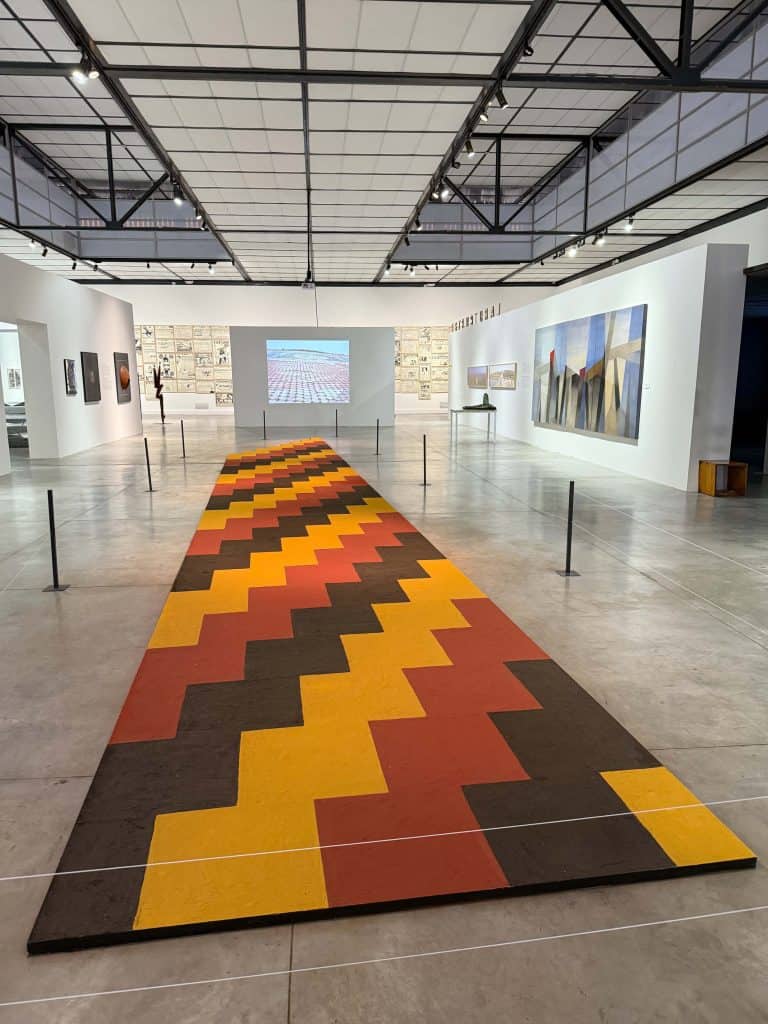
Numerous photographs caught my attention as they conveyed such intriguing emotions that made it hard to turn away from.
The museum isn’t huge so you could easily see all the exhibits in 1 – 2 hours.
A bonus to visiting MAC is the outdoor garden and seating area which is a little oasis within Barranco.
There is also a Beso Frances café if you find yourself hungry for a crepe or snack.
Hours: Open Tuesday – Sunday from 10:00 am to 6:30 pm and closed on Monday.
30. Playa Agua Dulce
Lima is known for its beautiful coastline but not so much for the beaches.
Most of the coast is made up of sheer cliffs with little beach areas or the current is too strong for swimmers.
But Playa Agua Dulce is one such beach that is both scenic and safe for swimmers.
It is on the southern portion of Barranco’s coast where it meets the Chorrillos neighborhood.
There is a large sandy beach with ample beach chairs and umbrellas for rent, showers, and restrooms.
Tip: The beach is primarily used in the summer months from December – March when temperatures are warmer and the sun is out.
31. Eat Peruvian Ceviche
I may have left the best for last as ceviche is the one quintessential Peruvian dish that you must try!
Even if the thought of ceviche doesn’t excite you, this version in Peru just might.
Ceviche in Peru is made using fresh white fish cut up into small cubes and marinated in the incredibly delicious “leche de tigre”.
Leche de tigre is one of the main differences between ceviche from Peru and elsewhere.

It is a blend of lime juice, salt, garlic, cilantro, thinly sliced red onions, and peppers. The acid from the limes “cook” the fish so it is safe to eat.
The fish with the leche de tigre is garnished with large Peruvian corn kernals (choclo), crunchy corn kernels, a slice of boiled sweet potato, and a piece of lettuce.
Taking a little bit of everything in one bite is pure bliss…
There are numerous places to eat outstanding ceviche but of the ones I tried, my favorite was at Republica del Pisco in Barranco.
Tip: Eat ceviche by 3:00 pm to make sure you are getting it fresh. They use fish caught that day so you want to avoid any fish sitting around past this point.
Note: If you are looking for another great restaurant option in Barranco, eat at Isolina.
Accommodations In Lima
If I had to pick one neighborhood to stay in it would be Miraflores for the number of options in all budget ranges and with the highest number of places to eat just steps away.
Places To Stay In Lima Historic District
Miraflores Hotels
Barranco Hotels
Top Tours To Take
I love taking food and walking tours to get an in-depth understanding of the history and the best dishes to try.
I thoroughly enjoyed food tours in each of the 3 neighborhoods. You can’t go wrong with any of them. These are my top picks for Lima tours:
Lima’s Historic District Walking Tour – see the top sights including visiting the catacombs!
Food Tour in Historic District – sample the tastiest bites from street food, markets, and eateries in Lima’s historic district!
Miraflores Food & Markets Tour – Miraflores is known for some of the best restaurants and markets in Lima, so this tour is worth every bite…
Barranco Restaurant Food Tour – stroll through Barranco stopping at some of the best places to eat and try authentic Peruvian dishes!
Night Magic Water Show & Catacombs – This walking tour explores Lima’s catacombs and Magic Water Show after dark!
Paracas & Huacachina Oasis Day Trip – Explore the gorgeous coast of Paracas and the coolest oasis among the sand dunes south of Lima!
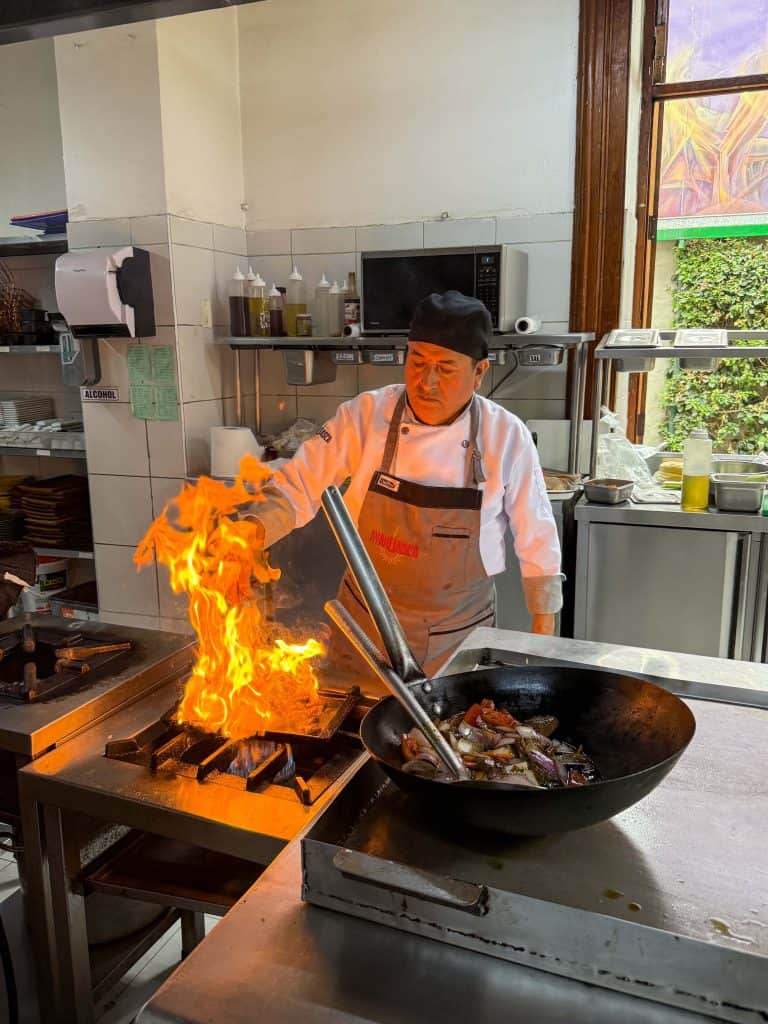
How To Get To Lima
Lima has the largest airport in all of Peru, so if you are flying in from out of the country you are likely flying into Lima’s Jorge Chavez International Airport (LIM).
For most visiting Peru, they headed to Cusco which requires flying into Lima before transferring to a domestic airline to continue on to Cusco.
All major airlines fly into Peru such as Delta, United, American, Aeromexico, and Copa Airlines.
In 2025, Lima’s expanded and built a completely new terminal which is referred to as the new airport but it is next to the location as the previous one.
I flew in and out of it just months after opening and it is incredibly nice and one of the most modern airports I’ve been to as far as being streamlined and using the most advanced technology.
For example, I was able to keep my shoes on, leave electronics in bag, and bring a bottle of water through security.
If you plan to continue on flying to other domestic airports such as Cusco, Arequipa, or Juliaca the main airline is LATAM Airlines, which I found nice to fly.
Start Searching Best Flight Deals
Tip: From Lima’s airport, it will take anywhere from 40 minutes to 1.5 hours to get to hotels in either the historic district or Miraflores depending on time of day. Traffic is pretty bad in Lima so have patience…
Book Your Airport Shuttle Now!
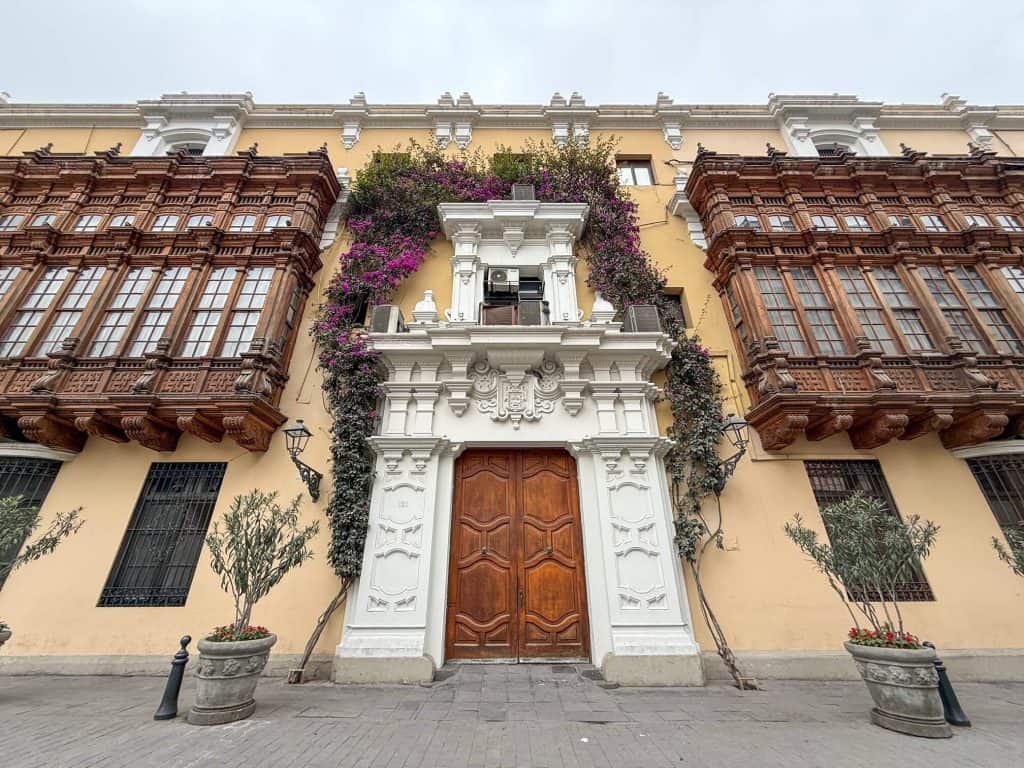
When To Visit Lima
Many wonder when the best time to visit Lima and really you can visit this capital city any time of the year.
Why? Well, with its location along the Pacific Ocean you don’t see any severe weather as far as snow and rain no matter the time of year.
In fact, Lima gets pretty much zero rain (officially a little less than 1-inch per year).
For most of the year, Lima is pretty overcast (they grey city) and can get a heavy mist in the winter but not rain.
If you are looking for warmer temperatures and sunny skies then you want to visit during Peru’s summer months (December – March).
The most important factor when considering when to visit? Why are you coming to Peru.
I say that because the majority of people are heading to Cusco and Machu Picchu. If that is your priority then I would not visit during the summer.
If you are hiking and want the best weather conditions then the spring, fall, and winter months are best.
Lima in spring, fall, and winter can get chilly at night but are fantastic months to tour the city. Just layer up with a sweater or jacket and you’ll be fine.
Tip: If you are coming from North America or Europe, remember that the seasons in Peru are opposite from back home.
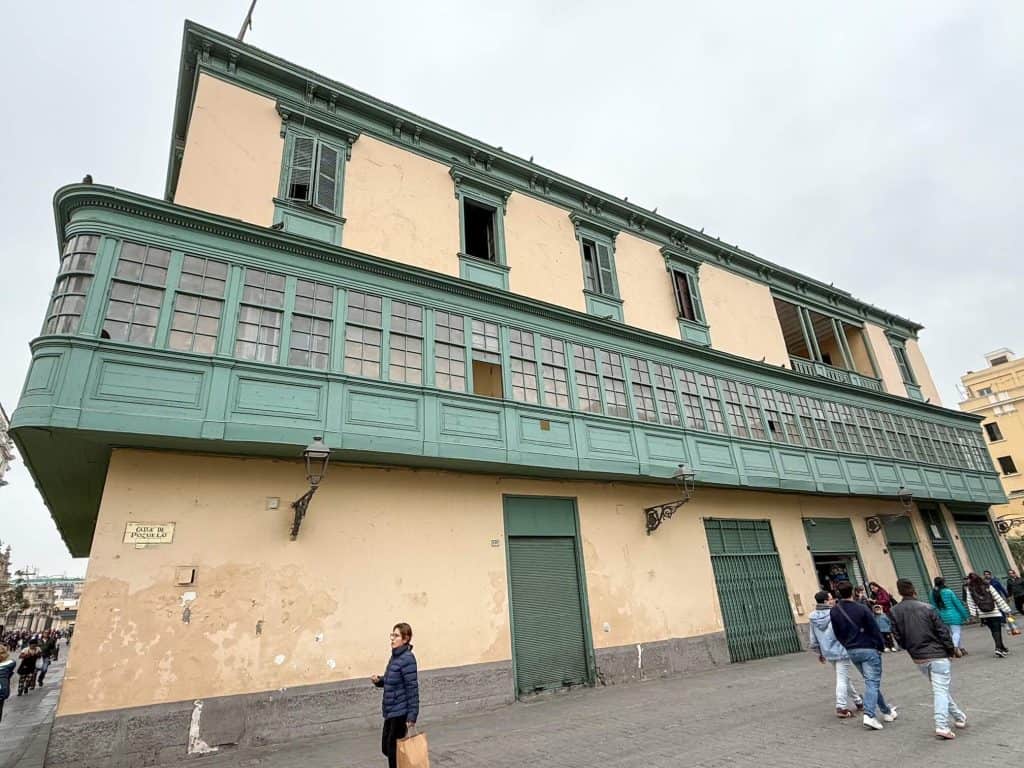
How To Get Around Lima
Within each of the neighborhoods in this post (Historic District, Miraflores & Barranco), the easiest way to get around is walking.
But if you are going from one neighborhood to another then taking a taxi or Uber is by far the easiest unless you really like to walk.
For example, from Miraflores to the Historic District it can take 30 mins to 1 hour due to traffic.
I found using Uber the easiest so I could pay with my credit card and not worry about communicating the correct place to the driver.
If you don’t want to use Uber, ask your hotel to call a taxi for you.
Lima Attractions Map
Got Travel Insurance?
Don’t leave home without travel insurance as you never know what might happen on a trip! It is always when you least expect it that something can go wrong like getting sick, in an accident or cancellation of some sort.
Get a no-obligation quote from two trusted travel insurance companies for peace of mind on your next trip!
Explore More Travel Destinations
25 Best Things To Do In Oaxaca City, Mexico For First Time Visitors
7 Best Mayan Ruins In The Yucatan Peninsula You Must See
7 Best Things To Do In Izamal, Mexico: Yucatan’s Yellow City
1 Day In Brussels Itinerary: Art Nouveau, Beer & Sweet Delights
Fairytale Day Trip To Bruges, Belgium: 11 Best Things Not To Miss
Visit Chichen Itza From Valladolid: 3 Best Ways To Get There
7 Best Filtered Water Bottles For Travel And Hiking
Allbirds Review: The World’s Most Comfortable Shoes?

Vanessa Shields
Vanessa Shields is the founder of Traveling Ness helping people with trip ideas, itineraries, travel planning, and boosting confidence for female travelers to take a solo trip. She has been a travel writer and content creator since 2019.

